So after a few days in Kathmandu recovering from our Everest Base Camp (EBC) hike we left Kathmandu and headed across to central/western Nepal.
We started our journey on a tourist bus to cover the 136 kms, which took us 7 hours (and cost us 1,300 Nepalese Rupees each (NZD17.30)) – the roads met our expectations of being notoriously poor, so we definitely were not disappointed. The first stop or our adventure was to stay in Bandipur. To reach this town we disembarked our bus in the town of Dumre, and then jumped onto a local bus (100 rupees each (NZD1.40)) for the final 8 kilometre ride up winding roads to the sleepy town of Bandipur.
This town hasn’t dramatically been changed by tourism, and we were again spoiled by having excellent views of some of the Himalayan Ranges; including Dhaulagiri, Annapurna, Manaslu, Ganesh and Langtang, from our accommodation at the Himchuli Guest House. The Newari town combines traditional village architecture, beautiful Himalayan views and countryside hikes. Bandipur has also managed to retain its old temples, shrines, sacred caves and it’s timeless architecture.. It was so nice to relax a bit, take in the views of the Himalayas, take strolls through the narrow streets and wander into the surrounding rural areas – so peaceful.
Whilst we were there, we also decided to undertake 2 half day hikes (these were definitely hard going after EBC).
The first was to the small rural village of Ramkot that took us further into the remote hills, and we covered 11.9 kilometres (16,832 steps) – and accidentally returned via an old goat trail that took us along some perilous paths. The second hike was to Siddhu Cave, which is said to be the largest cave in Nepal at 437 metres deep and 50 metres high. The hike to the cave was 10.5 kilometres long (13,456 steps) and the path to get there was a vertical drop of more than 400 metres, resulting in 1,200 steep steps, which were bad going down – but even worse coming up. Helena decided to rest whilst Alan put on his head torch and entered the darkness to witness the delights of the cave. During the hike to the cave we were also lucky to see both monkeys, and a metre long snake – yay!!!
Saying goodbye to Bandipur we took the 10.00 (ish) local bus back to Dumre and waved down a local bus (costing 500 Rupees each (NZ$6)) for the 80 kilometre drive on road that were slightly better than previously experienced, to the hub of Pokhara, which would be our base for the next 9 days.
Pokhara is the second most visited city in Nepal, set at an altitude of only 820 metres and is famous for its tranquil atmosphere and the beautiful surrounding countryside, being located on the shores of Phewa Lake. From Pokhara, you can see three out of the ten highest mountains in the world (Dhaulagiri, Annapurna, Manasalu). To get an even better view we headed off to the small village of Methlang, which is just a supposed ‘gentle’ 4 kilometres walk. This meant more climbing for Helena (who may not have been impressed with Alan’s description of it being gentle), and 1.5 hours later we reached Methlang, which gave us sweeping views over Pokhara and the Machhapuchre (“Fishtail”) Peak – which has become the icon of the city. Overall we covered 10.6 kilometres (15,356 steps), so we both enjoyed our Momo’s, Chow Mein and local rice wine (Raksi)
The only other hike we undertook was to the ‘Peace Pagoda’. This was a 15.2 kilometre (22,205 steps) hike to the other side of Phewa Lake, before walking through forest to the ridge line 370 metres above the city.
We’ve now left our main bag in Pokhara and are heading on a local bus (caught from the ‘old’ bus station – NOT the ‘new’ station) in the direction of Lumbini – where Buddha was born – and hopefully we will get off at Bartung junction – to take a jeep for the 4 kilometre link road to our next destination of Tansen.
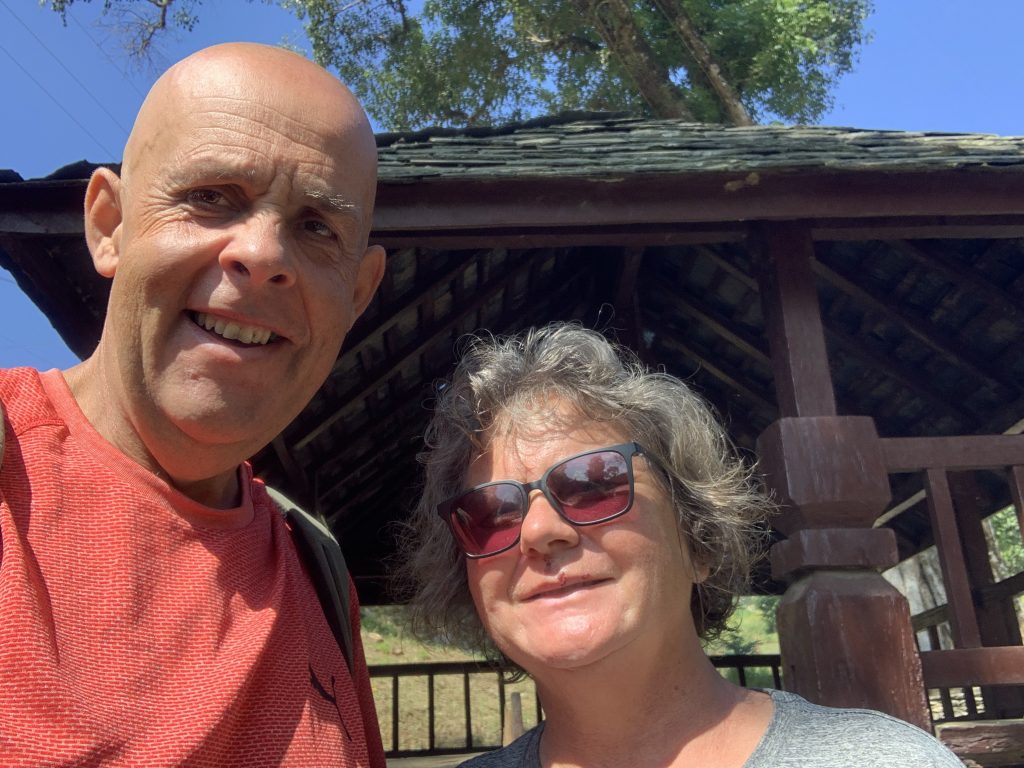
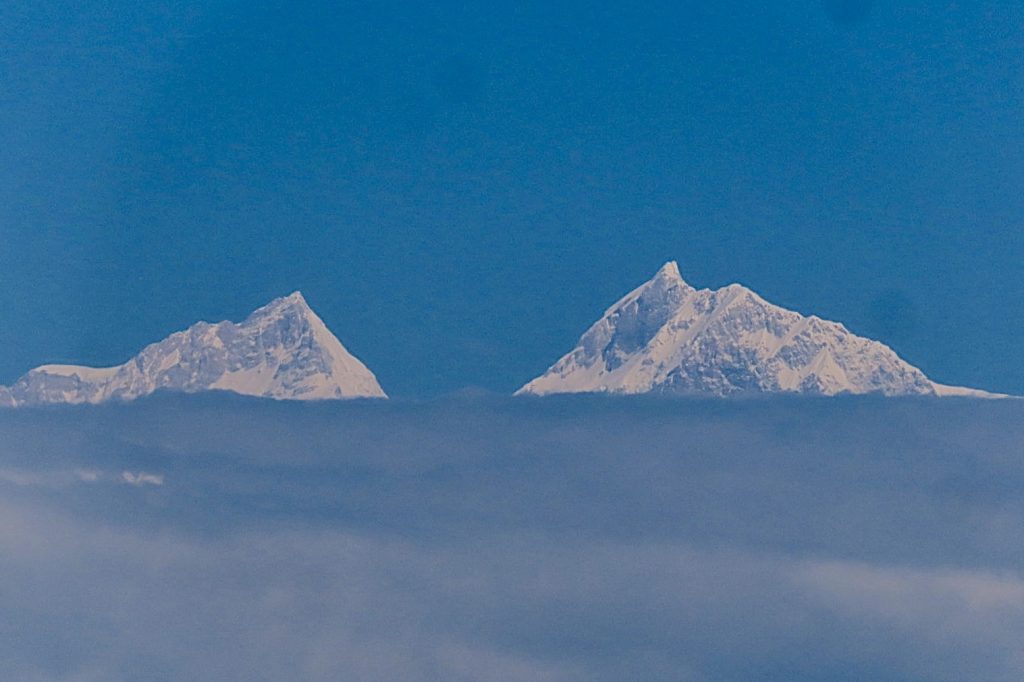
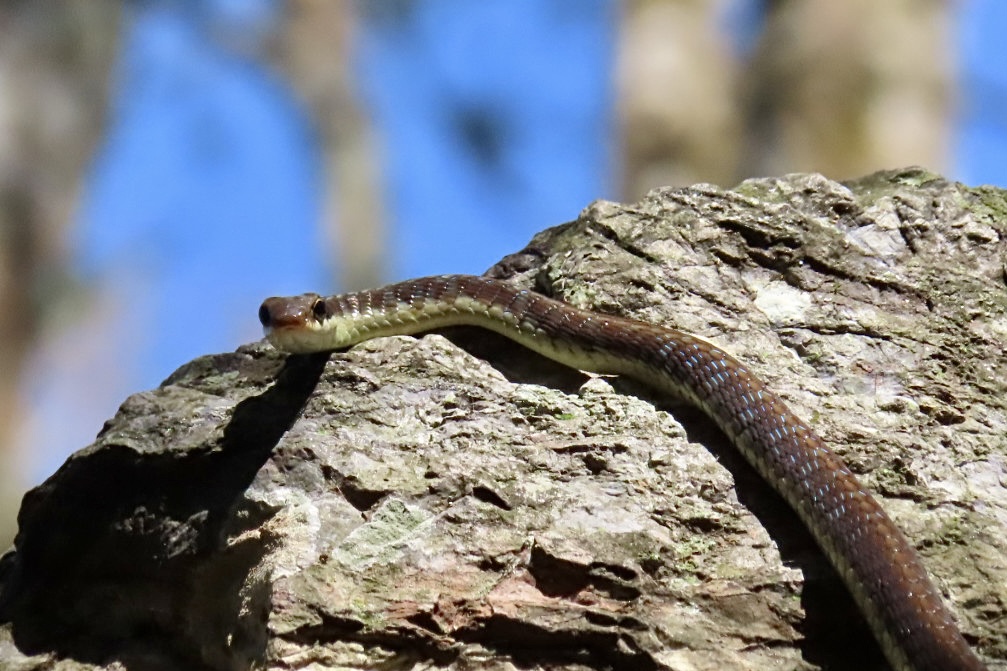
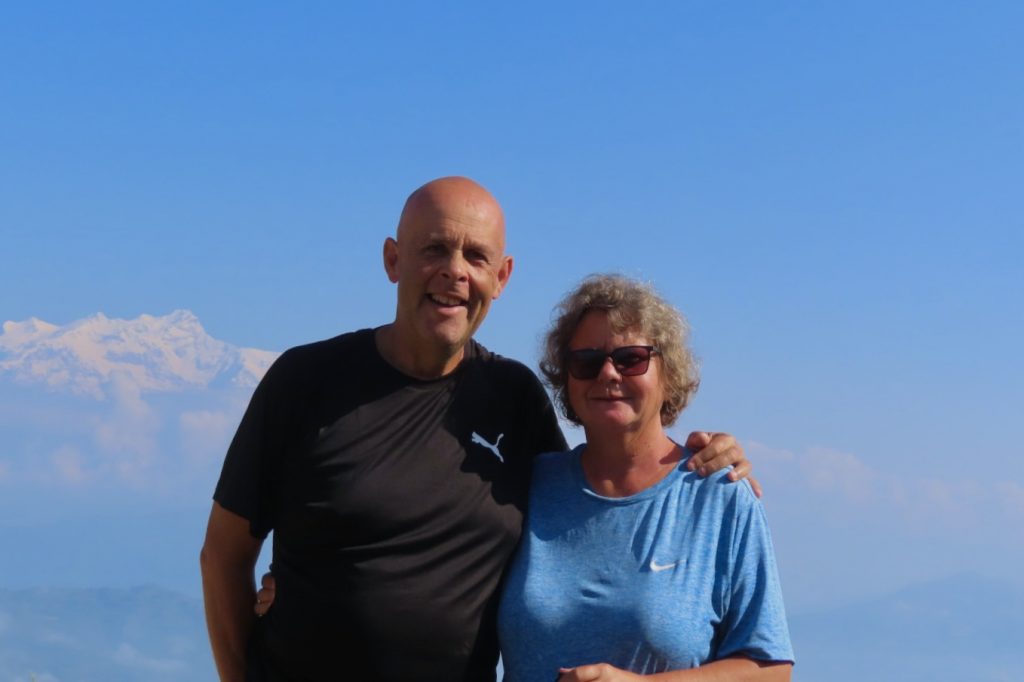
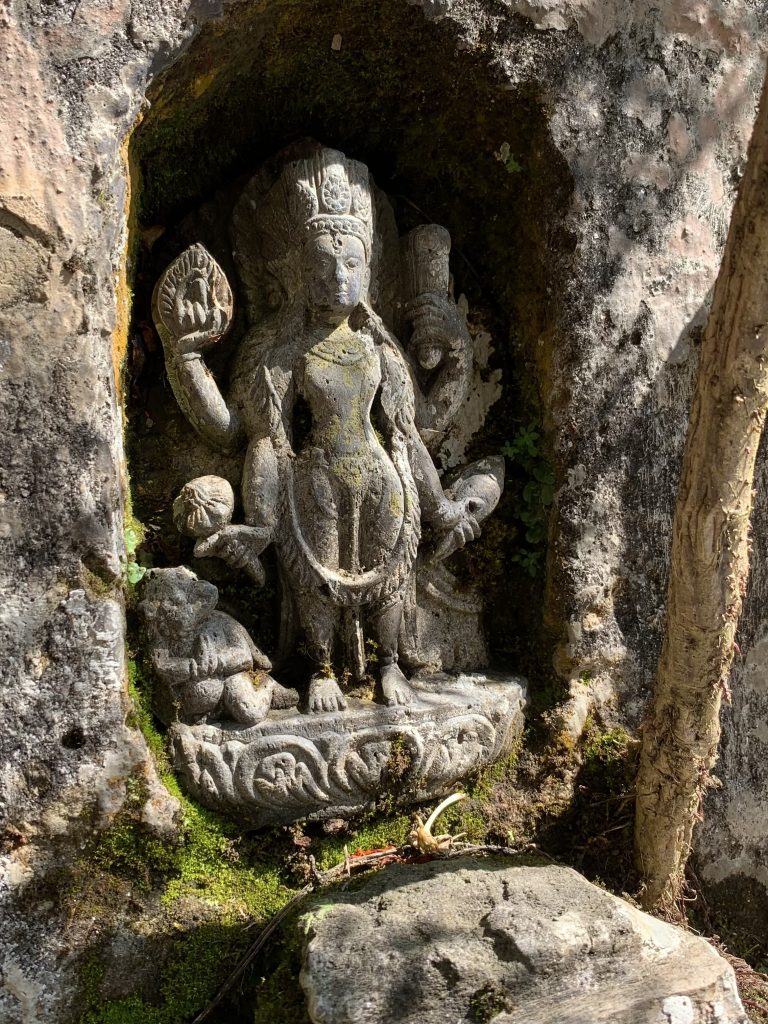
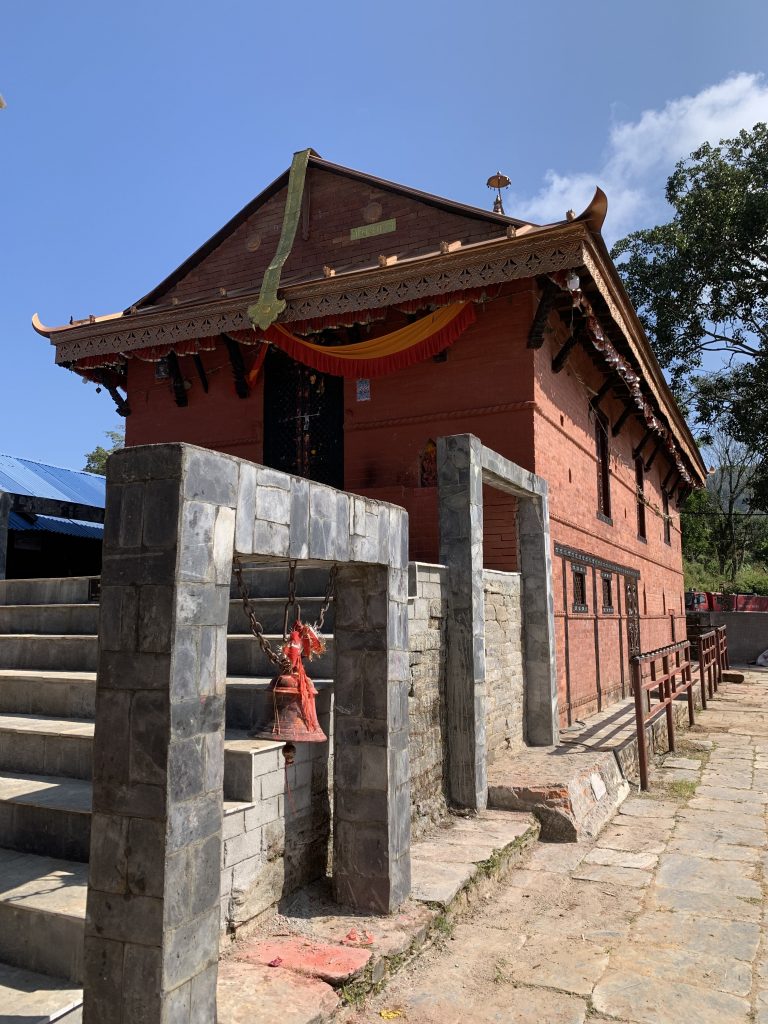
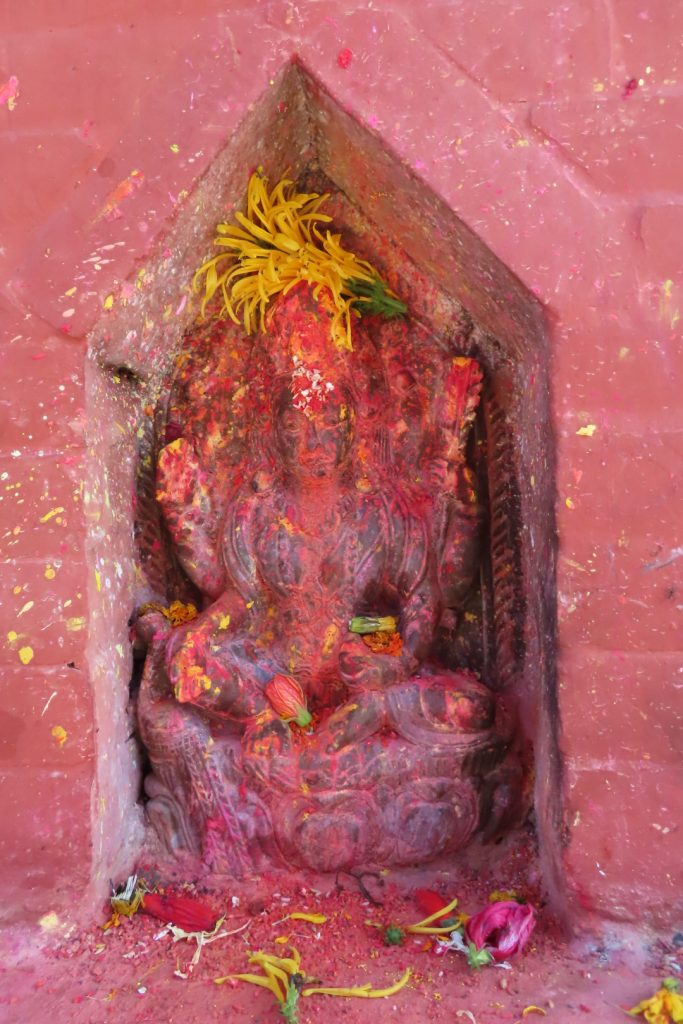
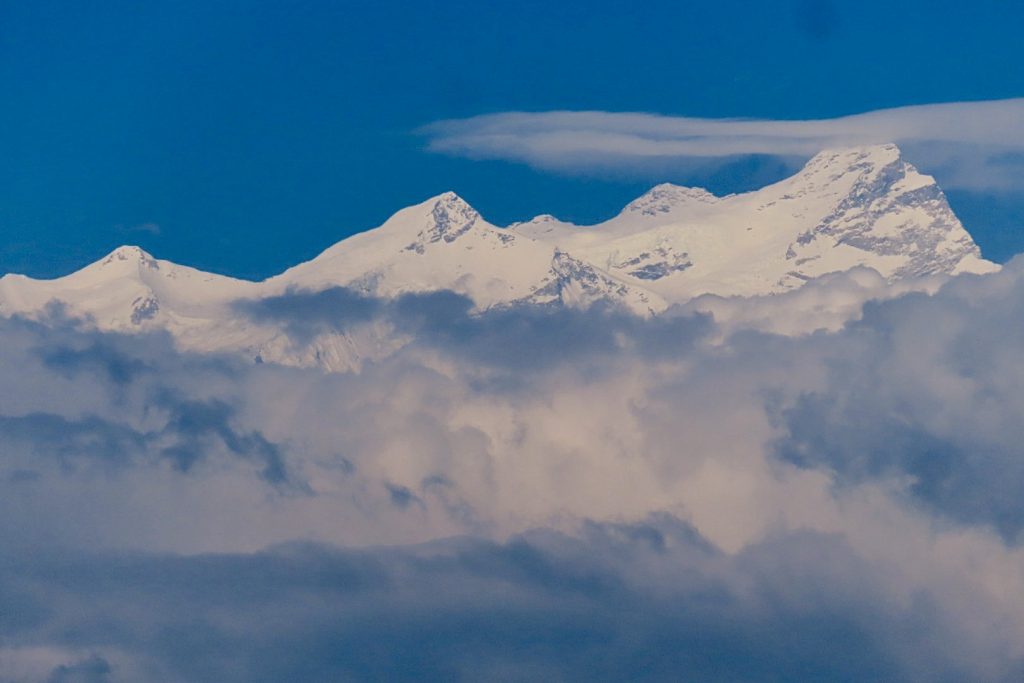
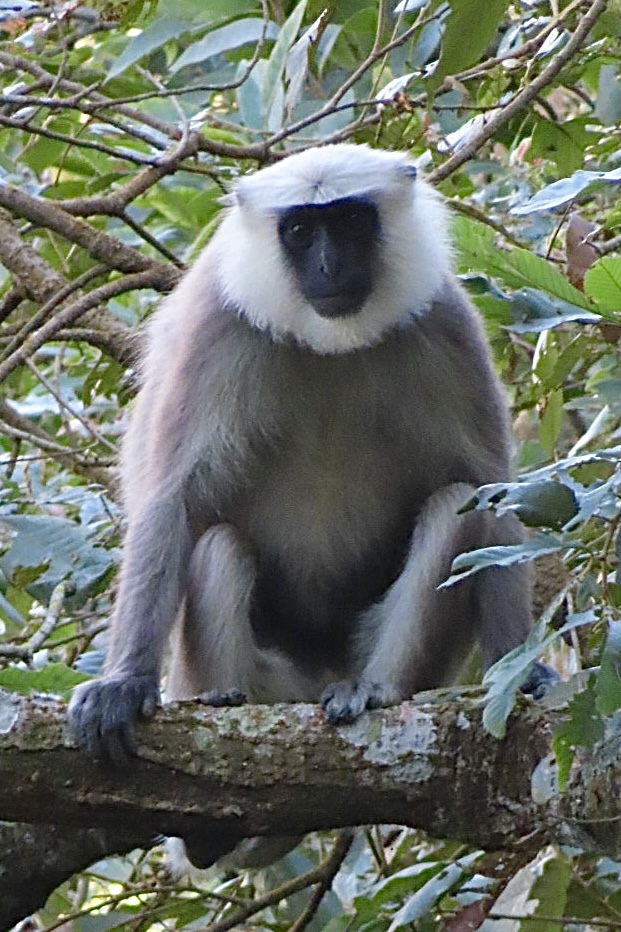
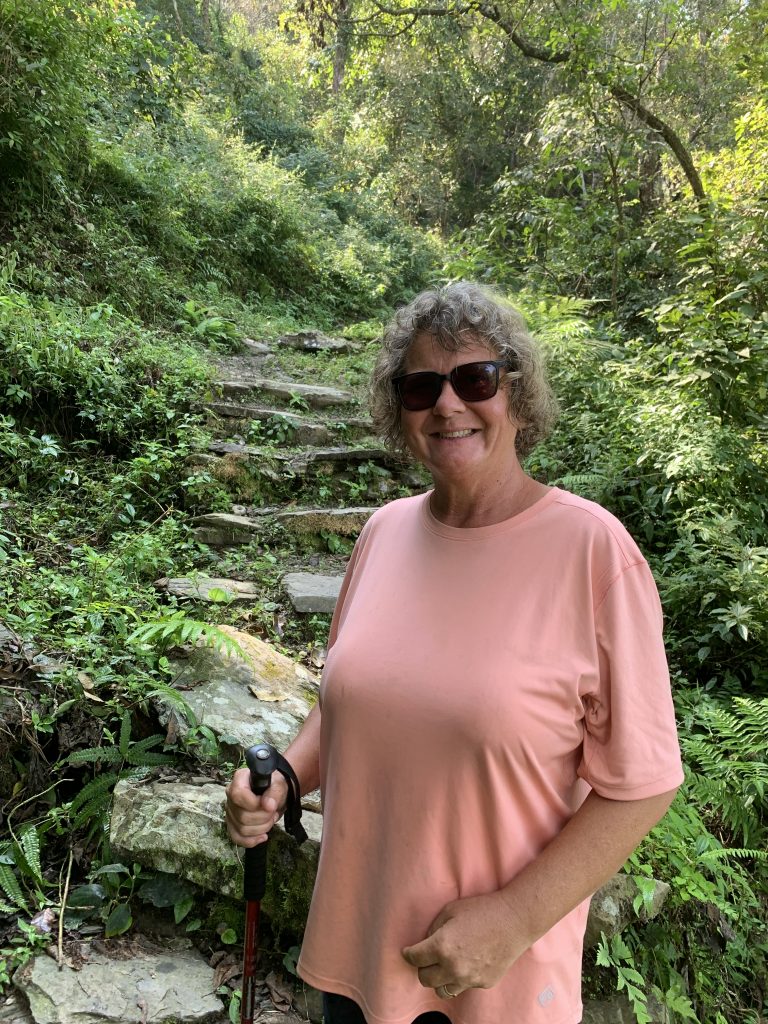
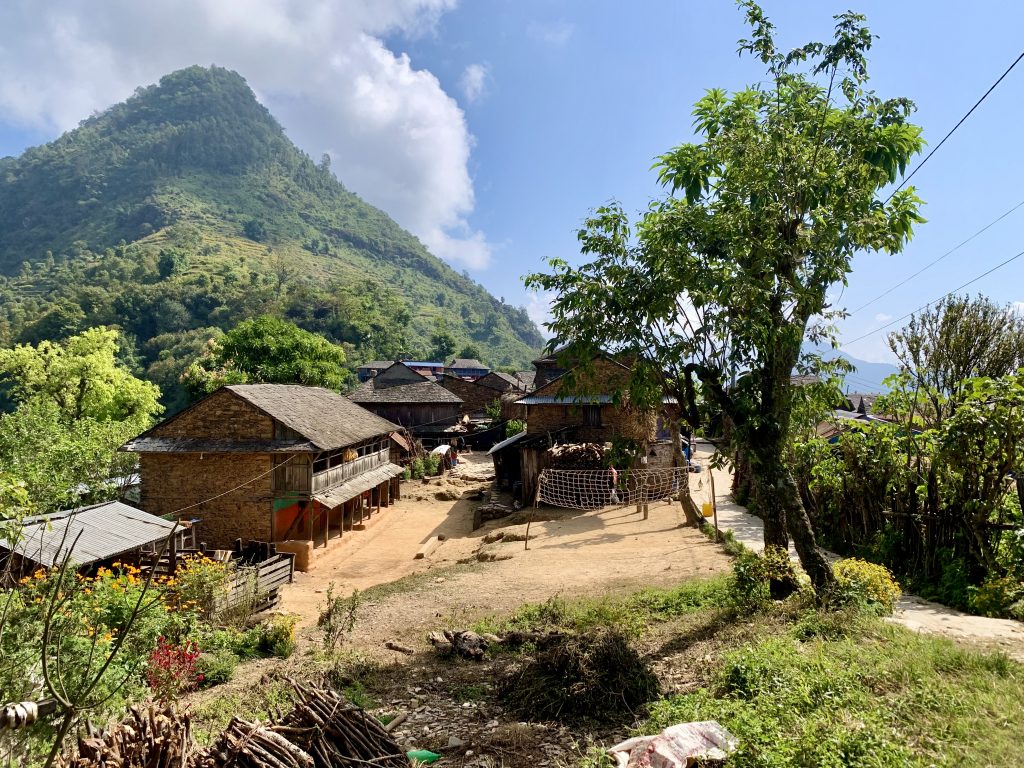

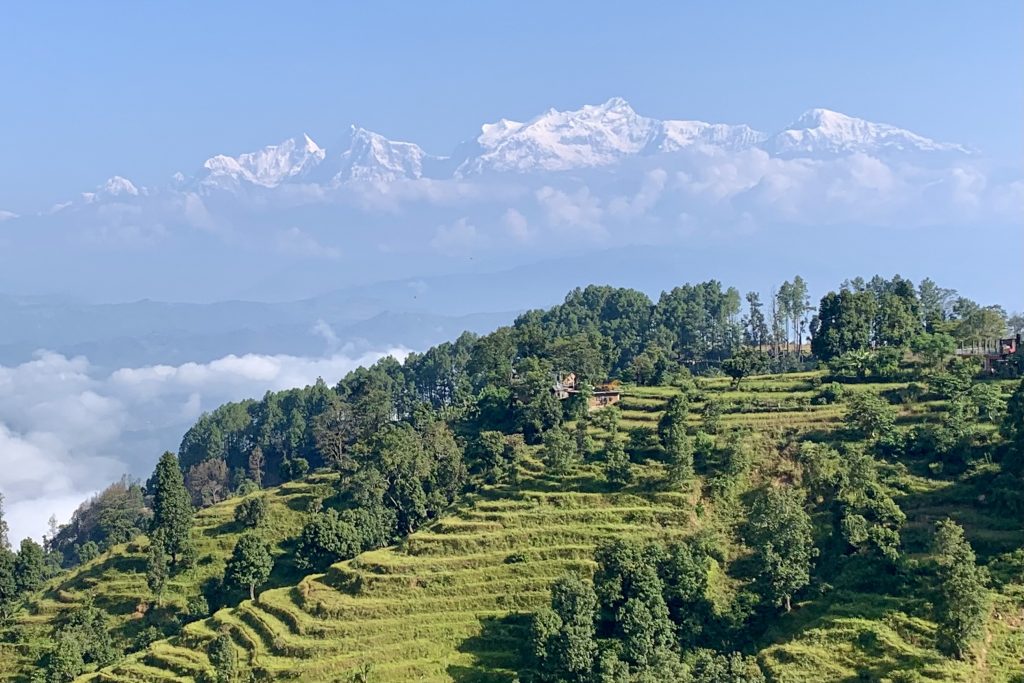
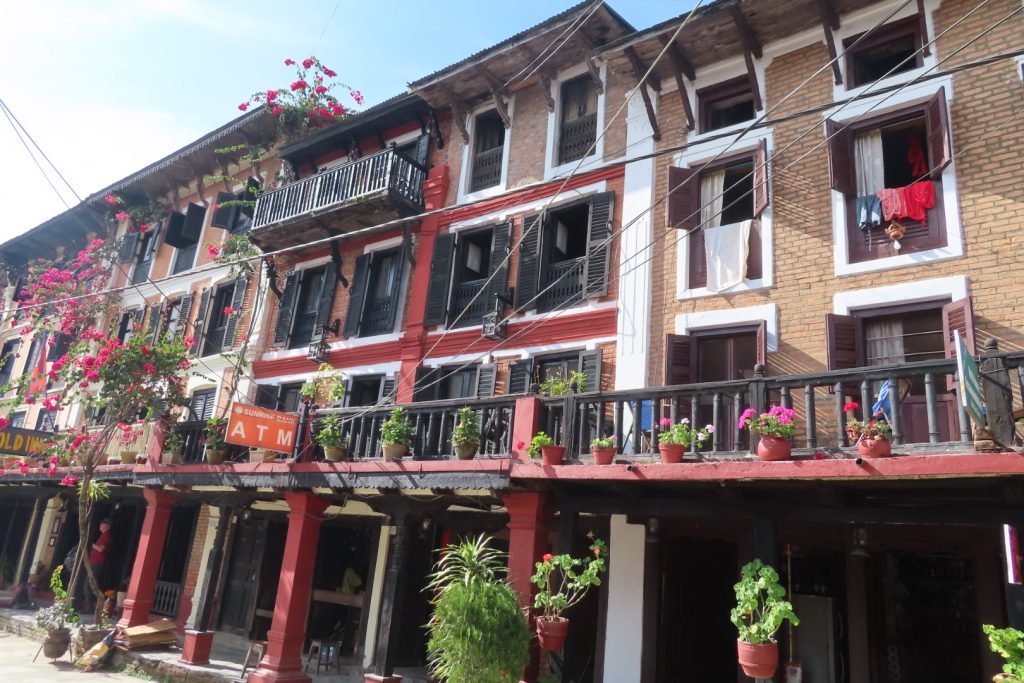
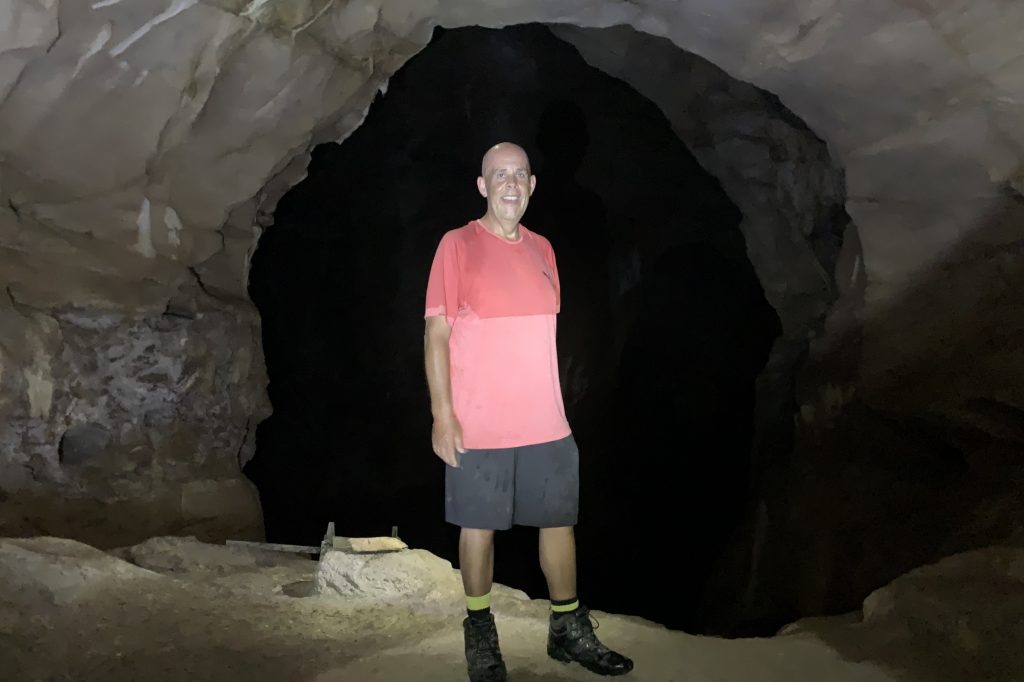
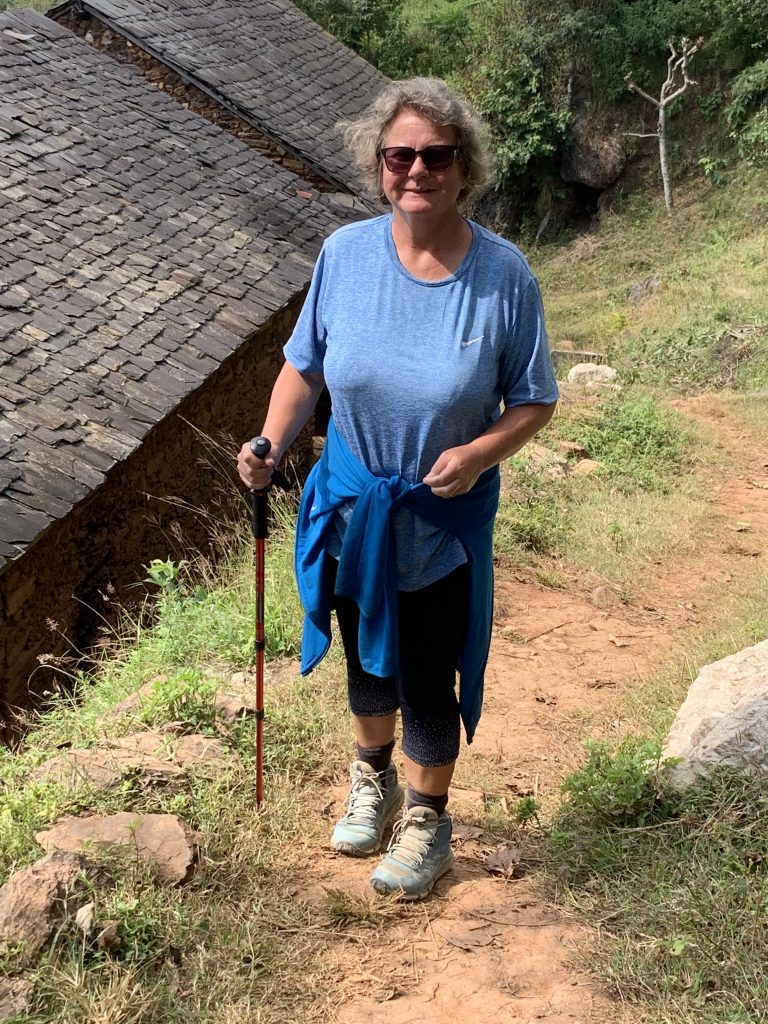
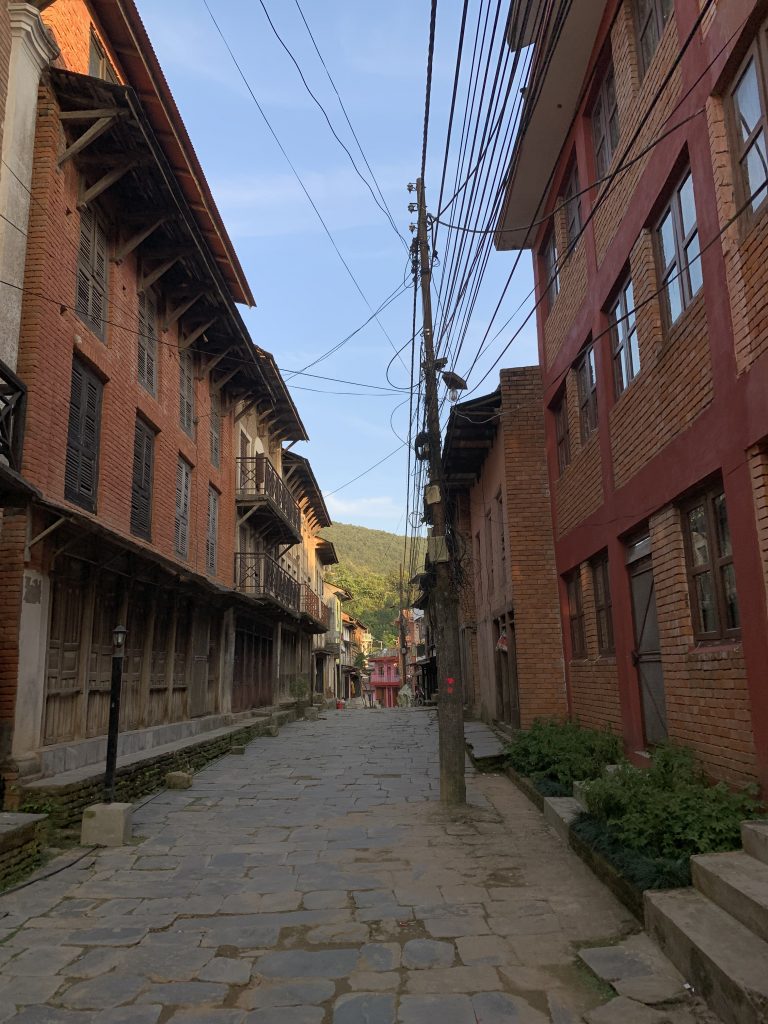
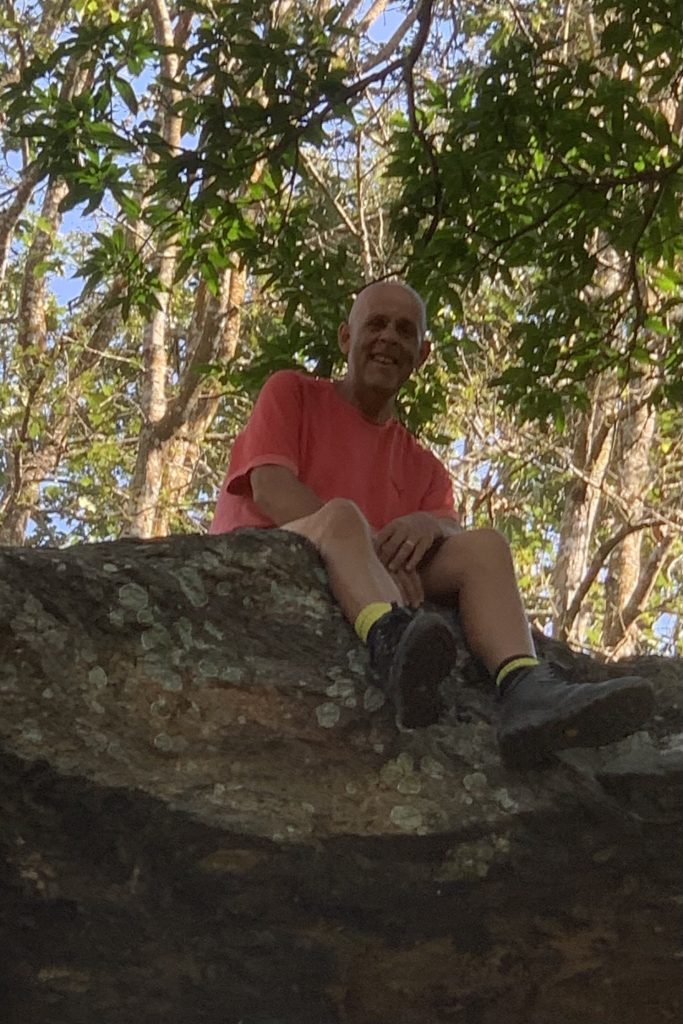
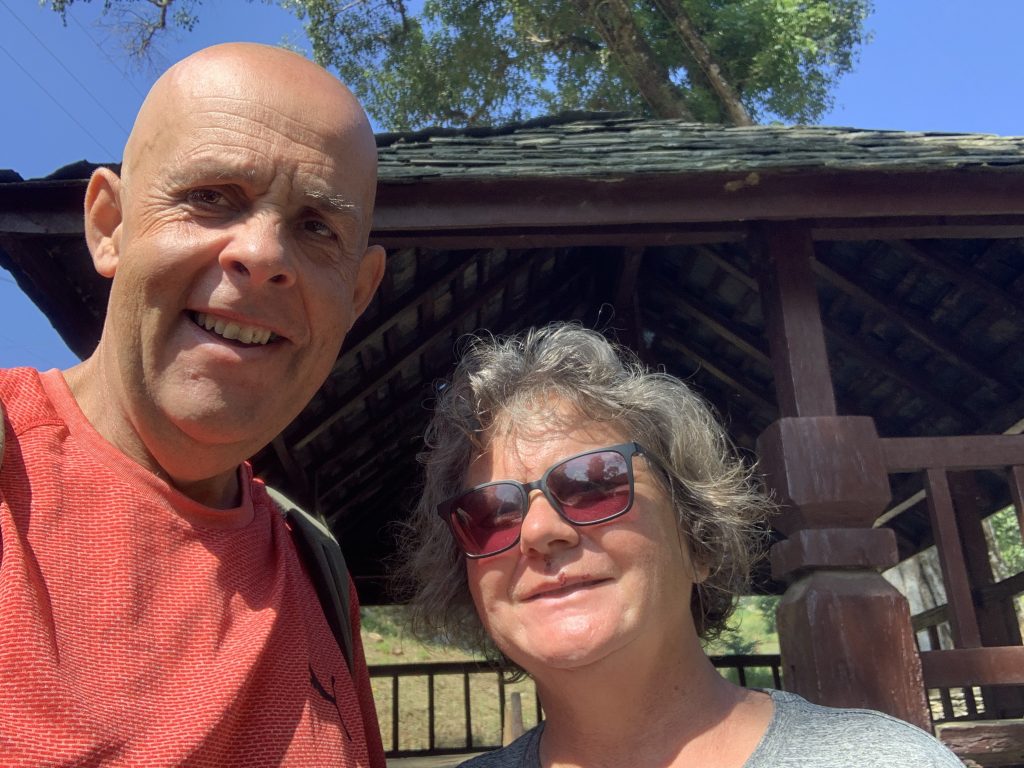
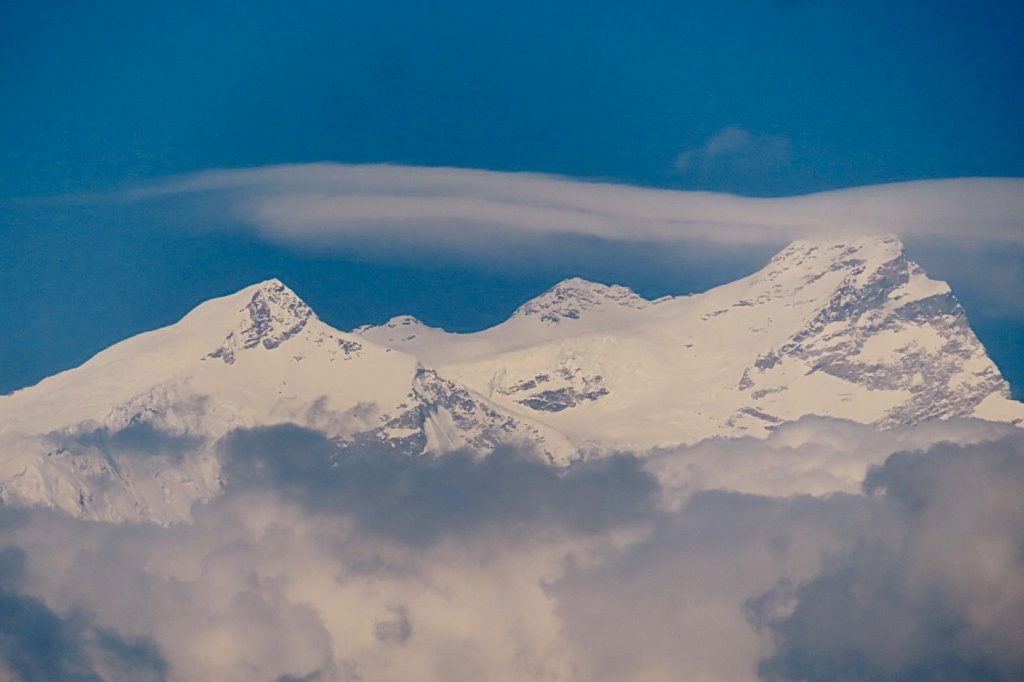


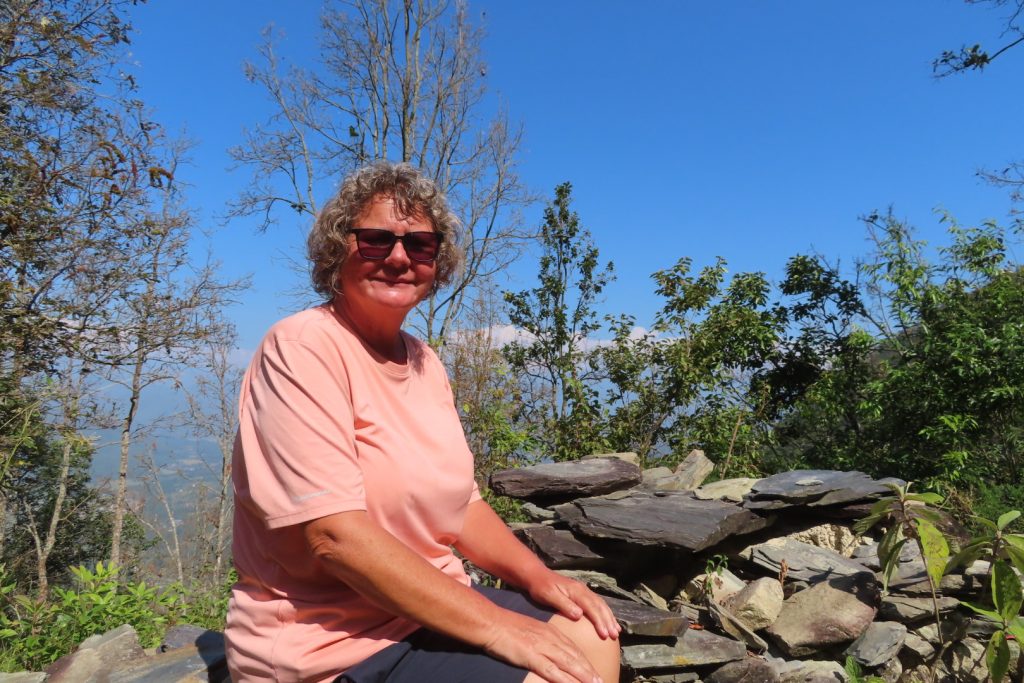
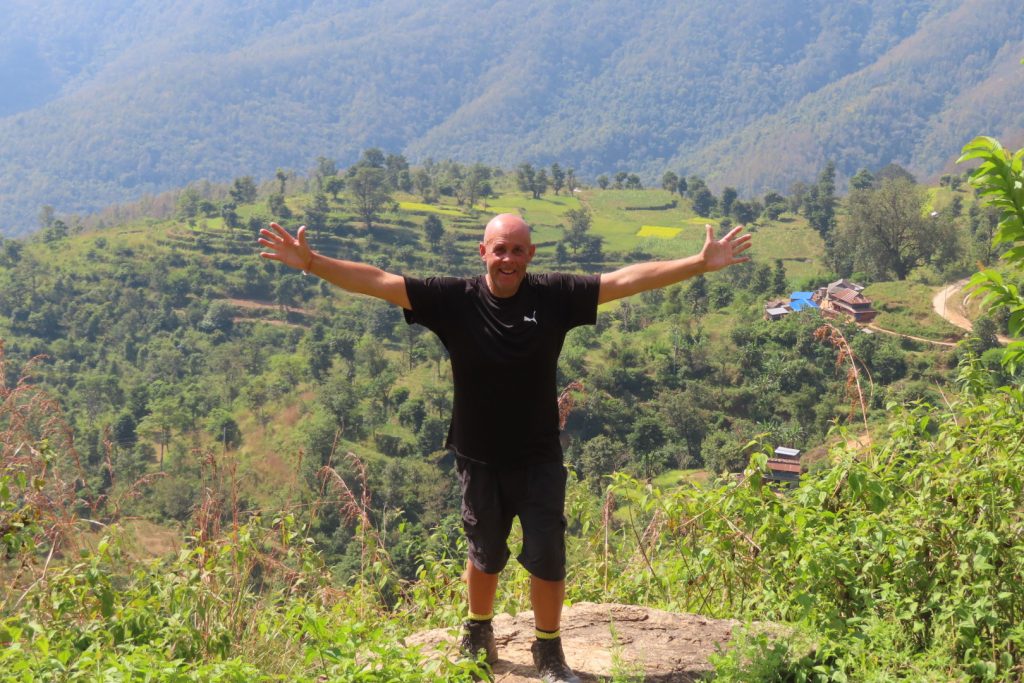
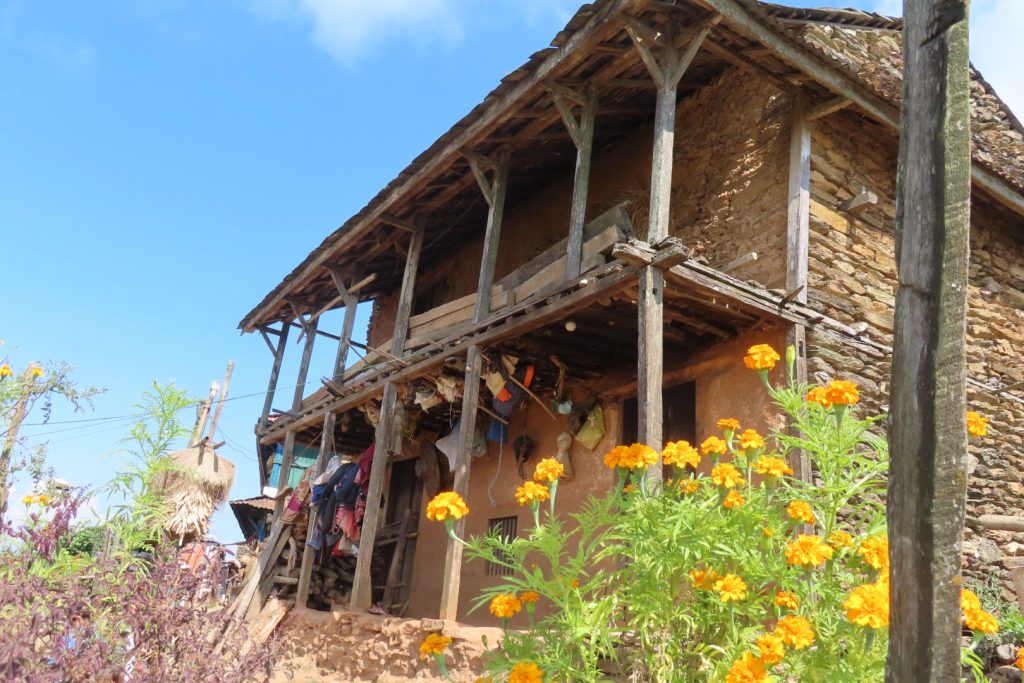
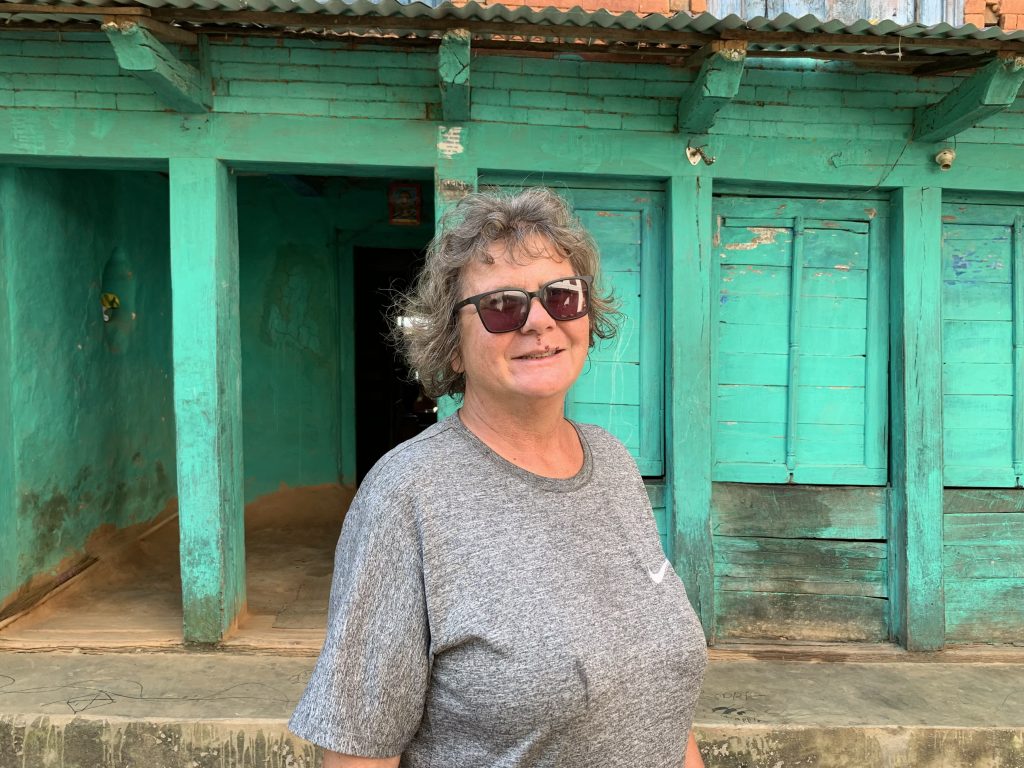
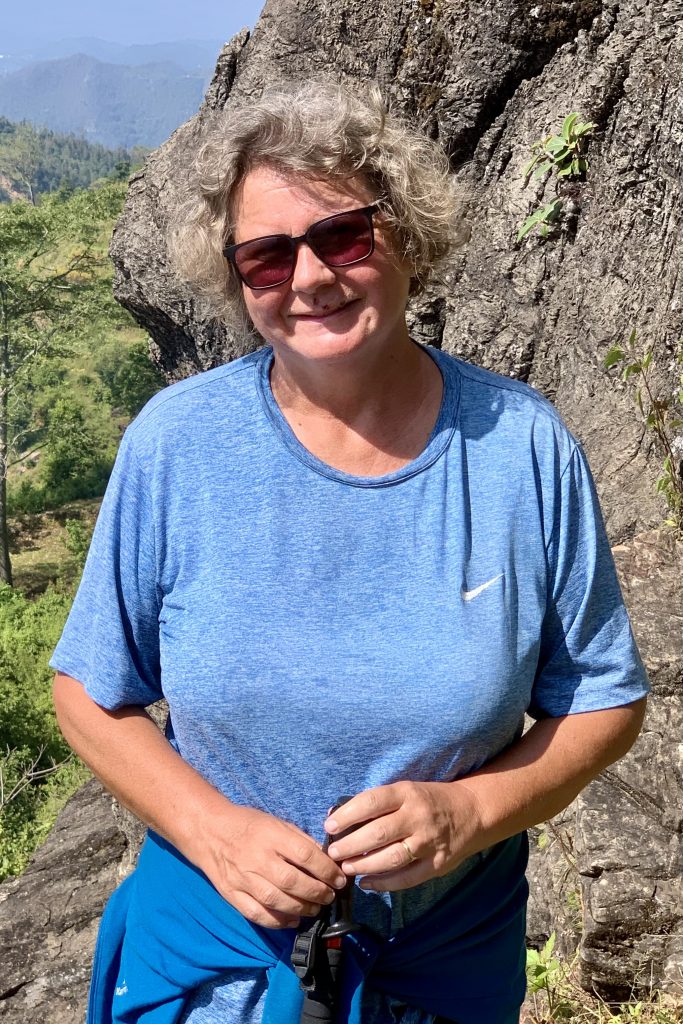
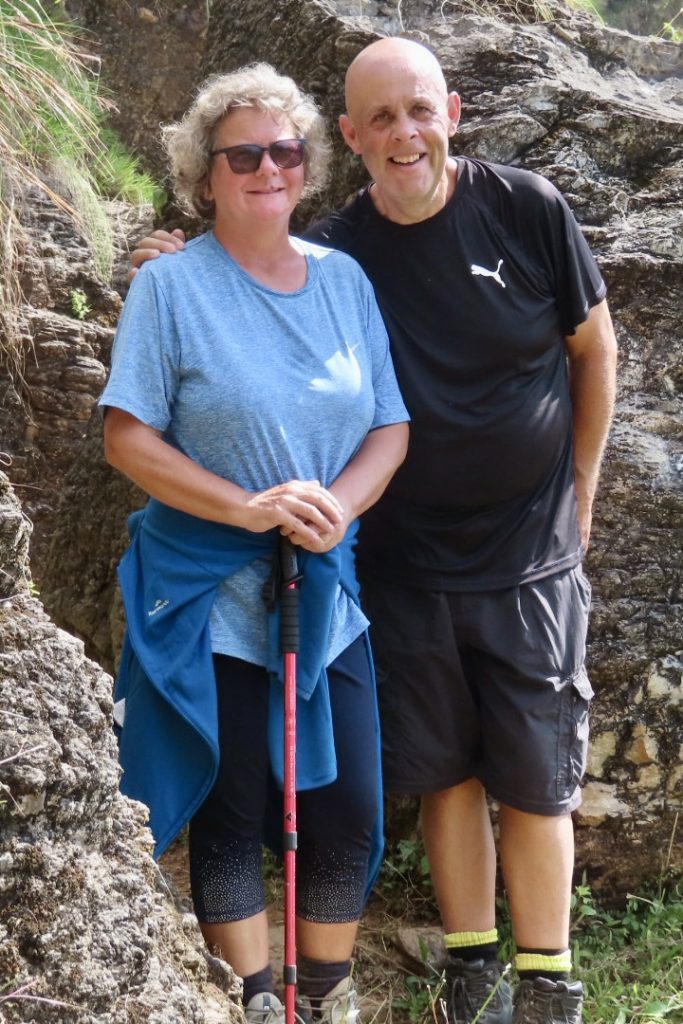
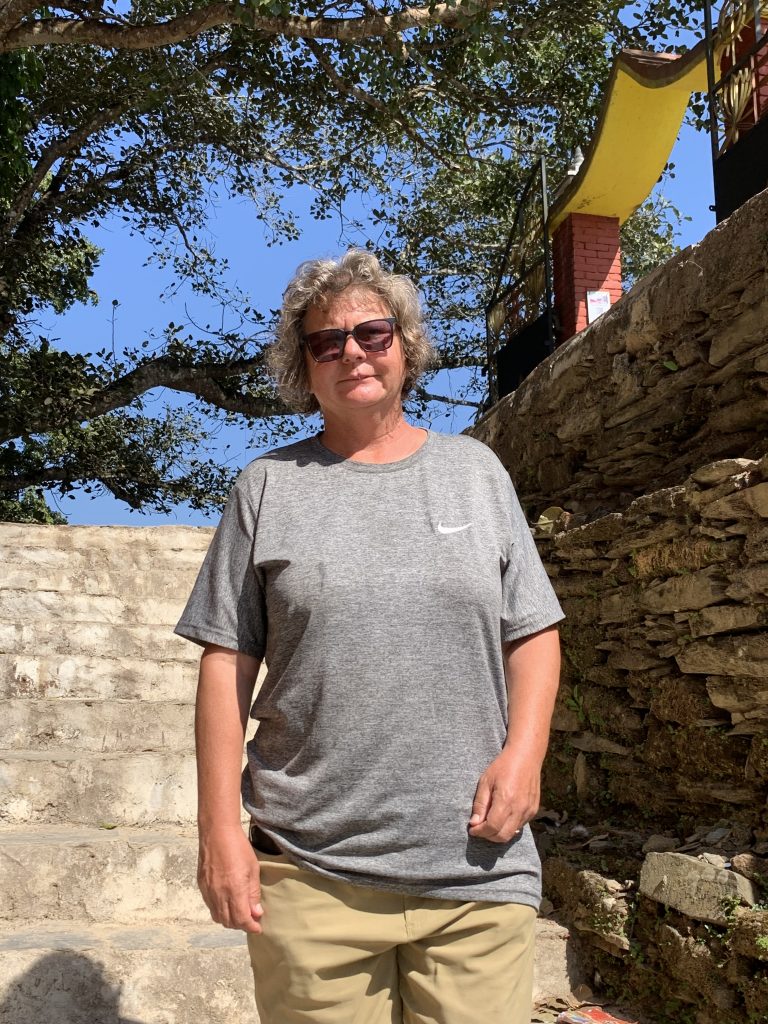
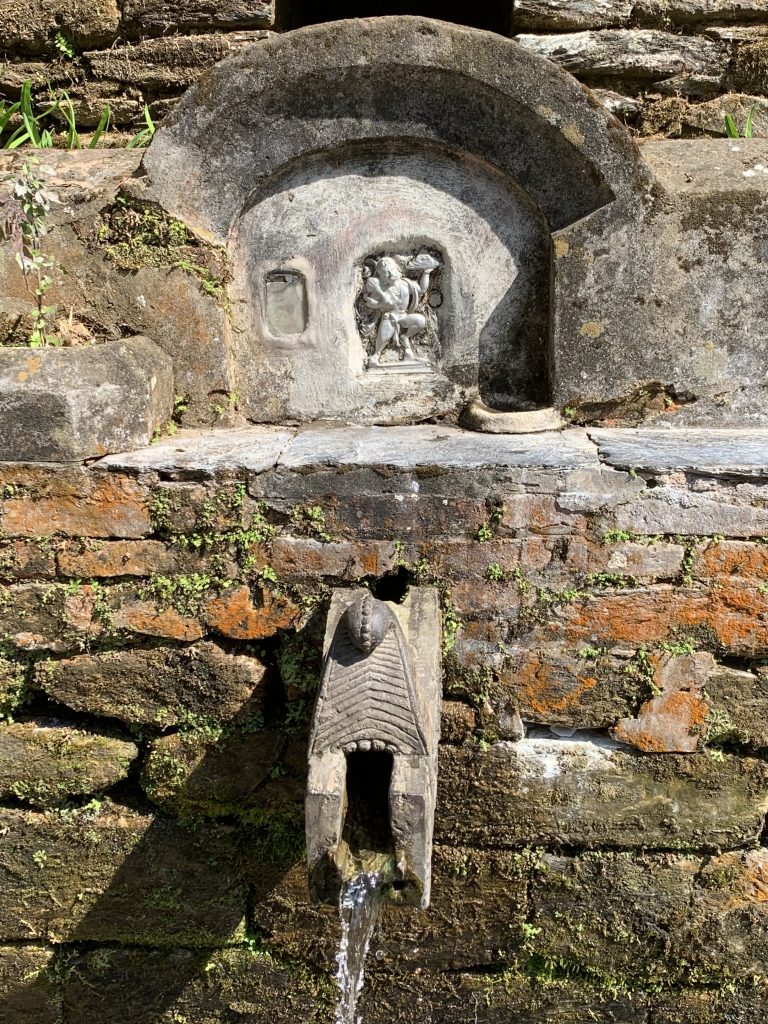
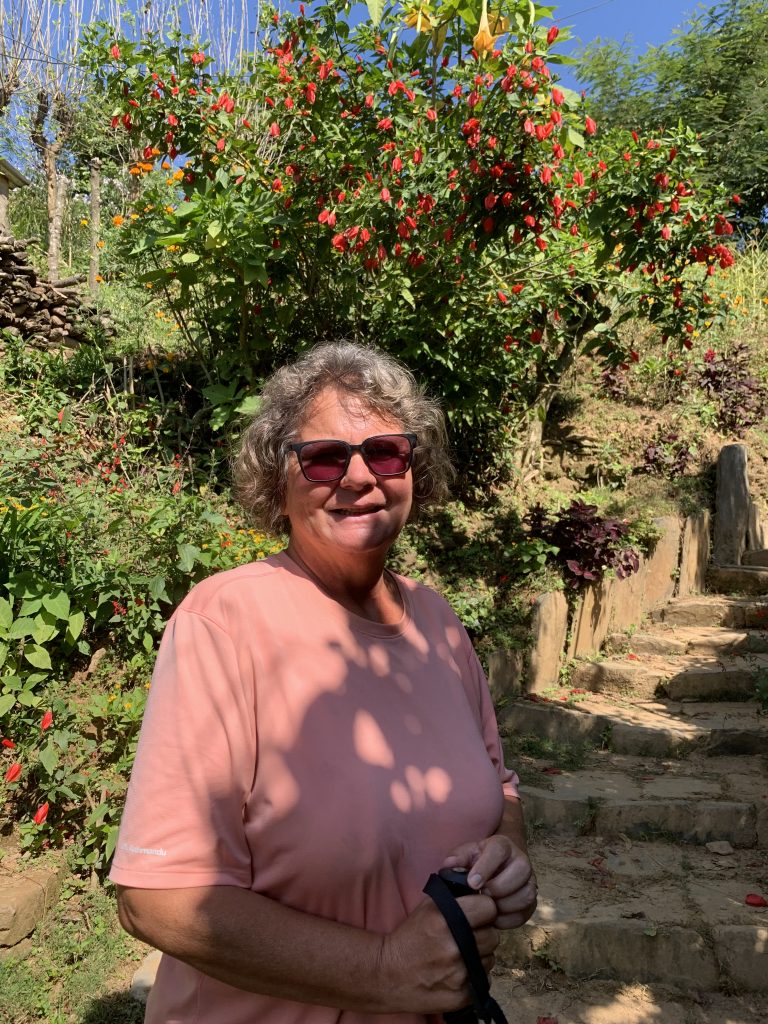

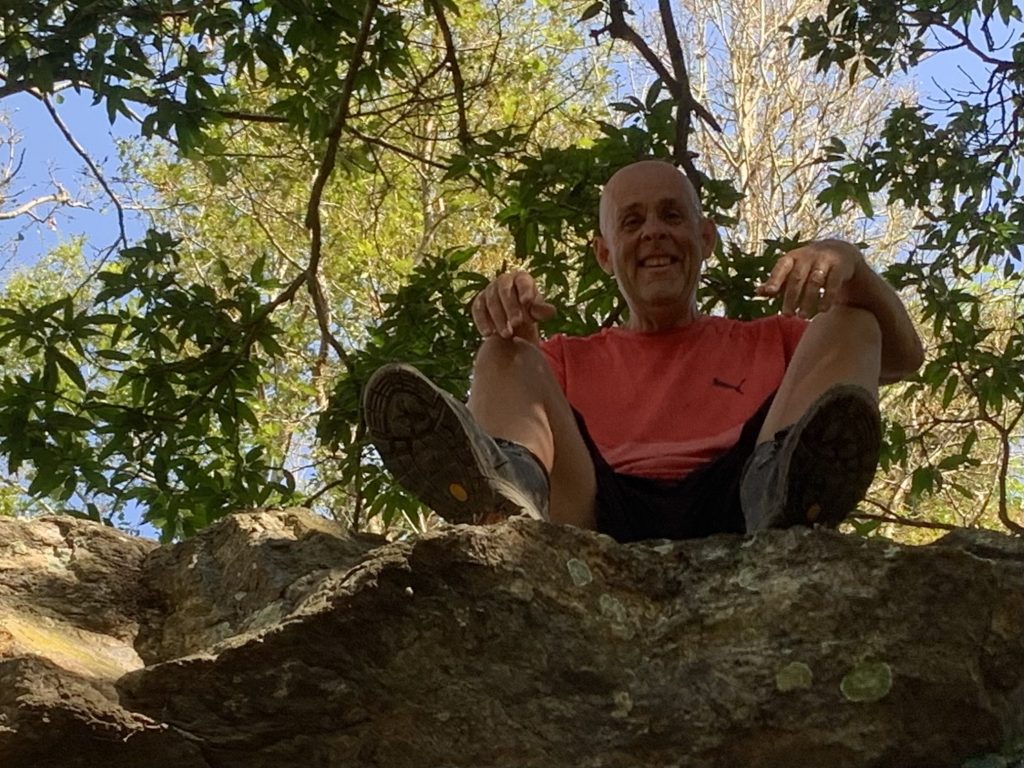
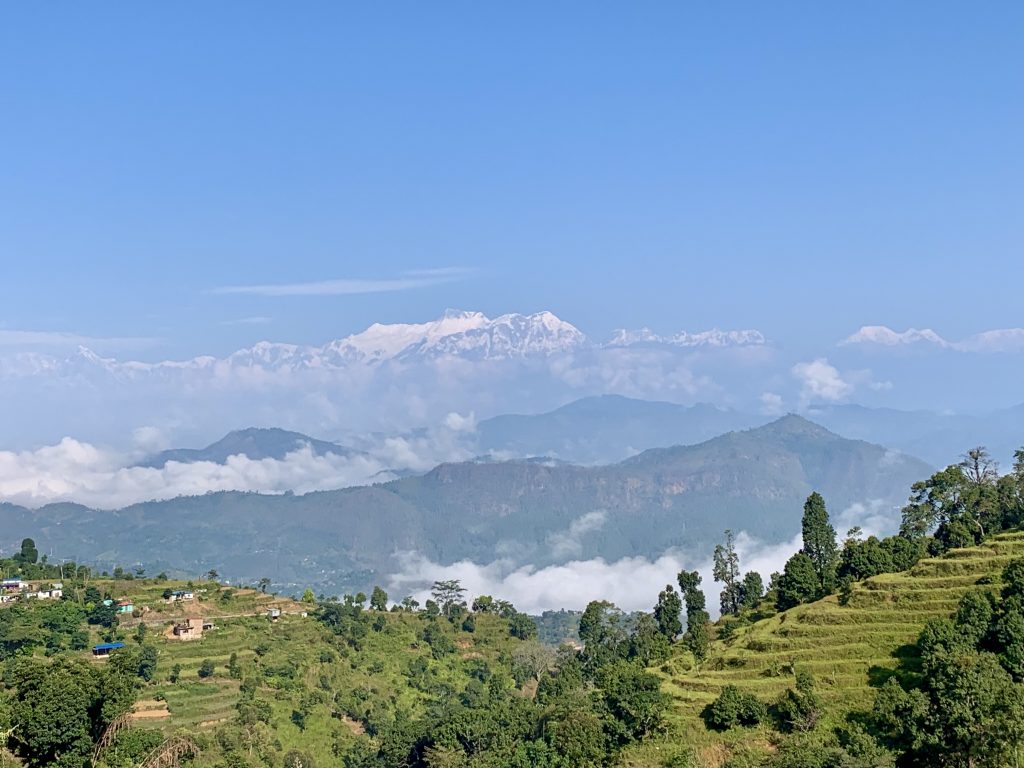
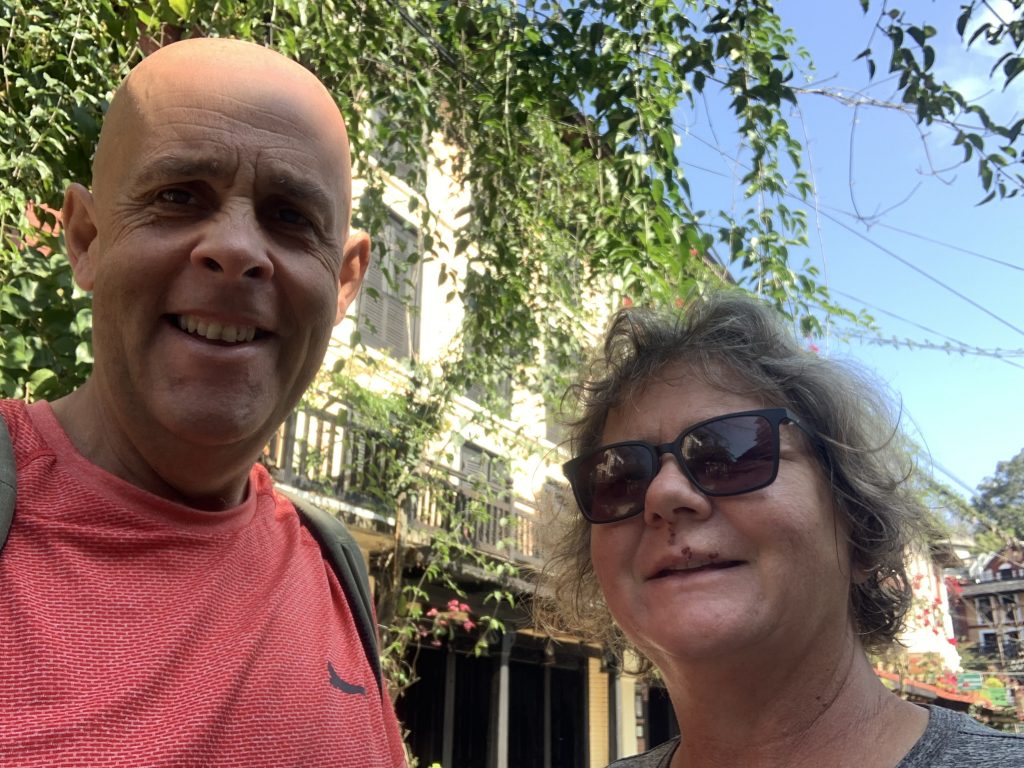
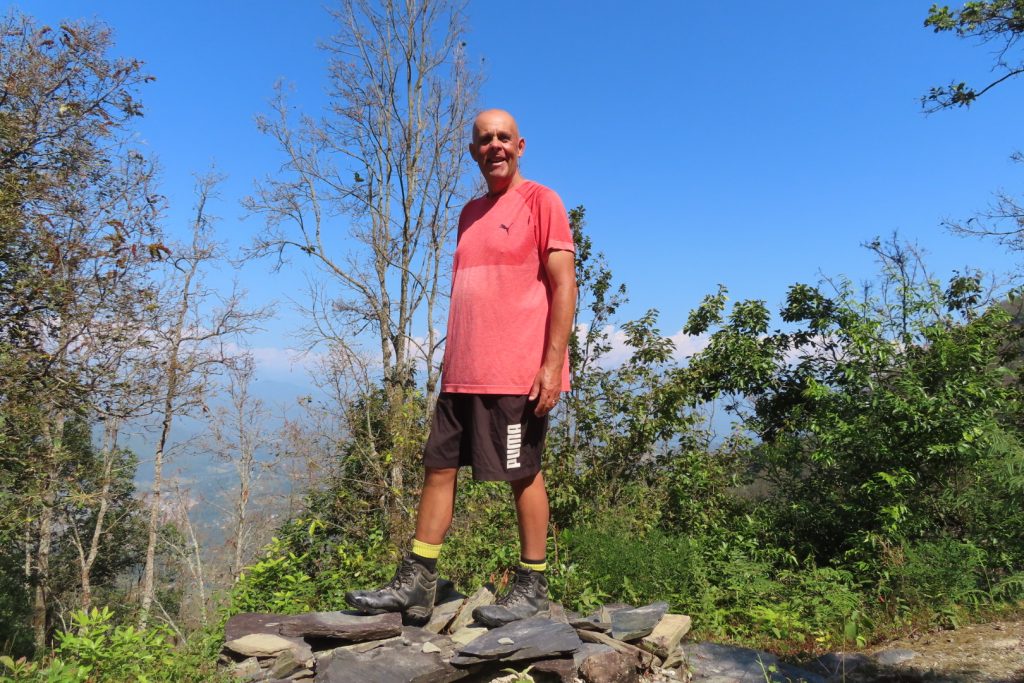
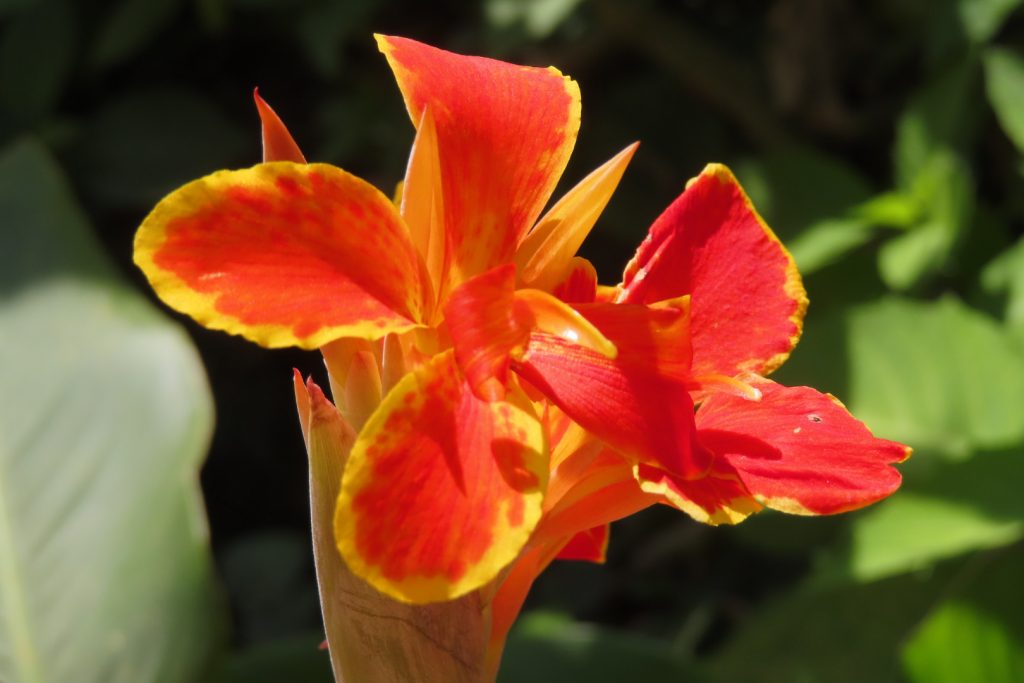

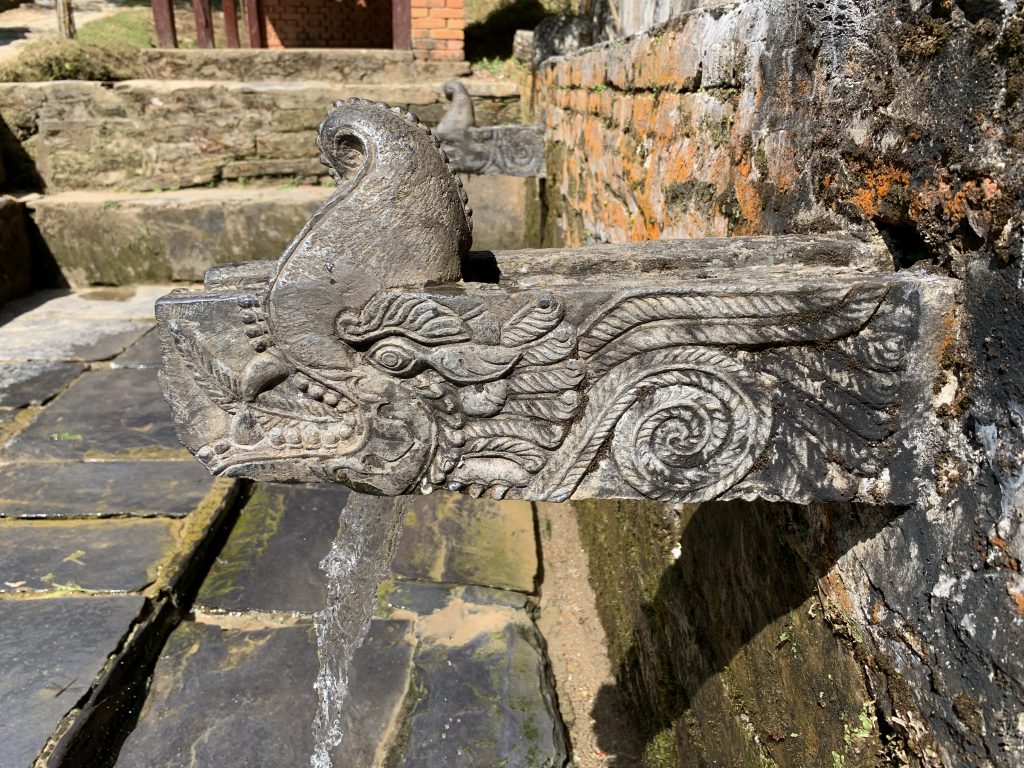
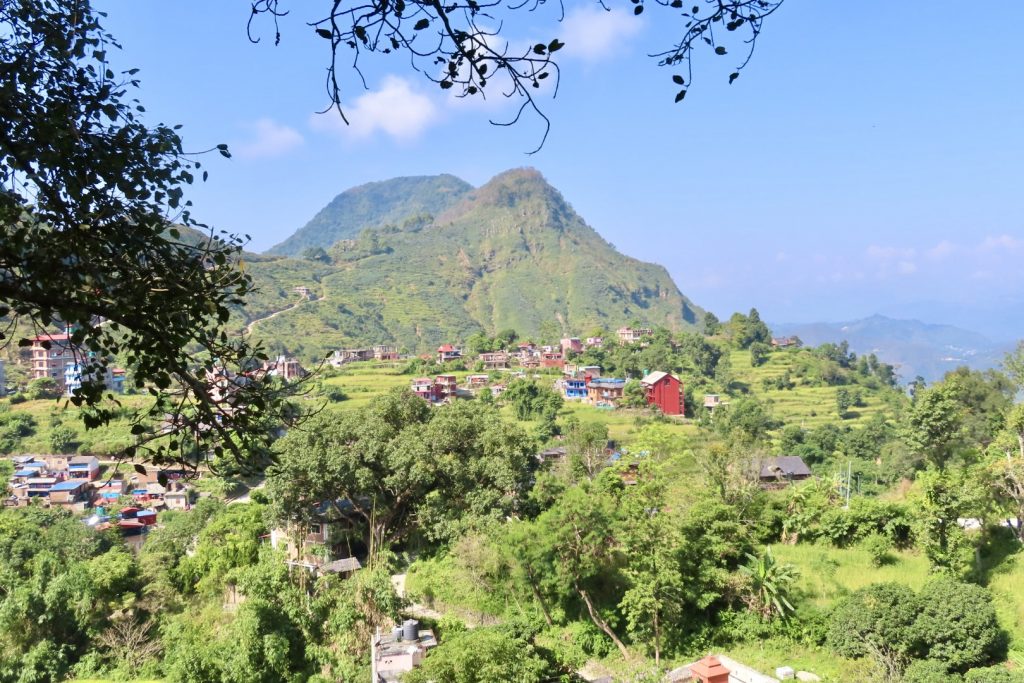
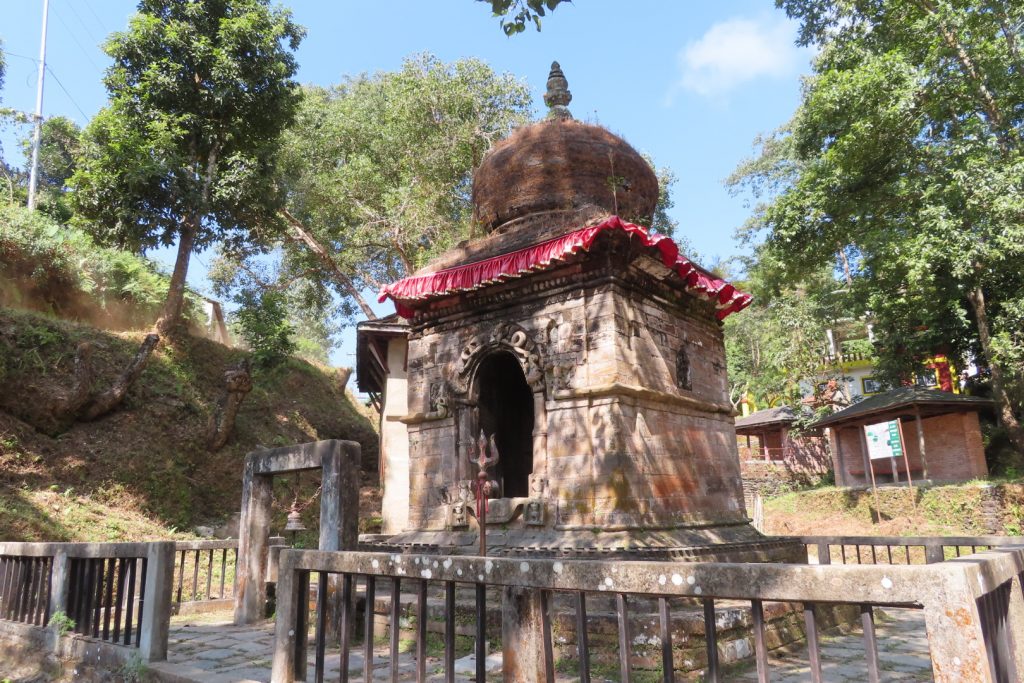
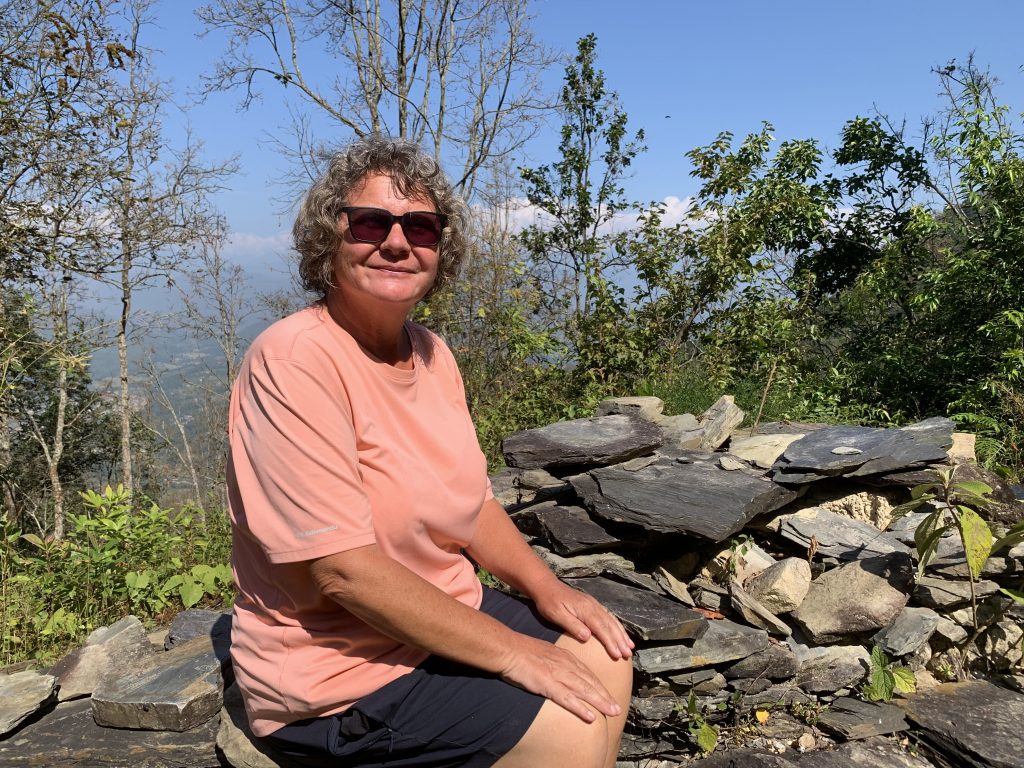
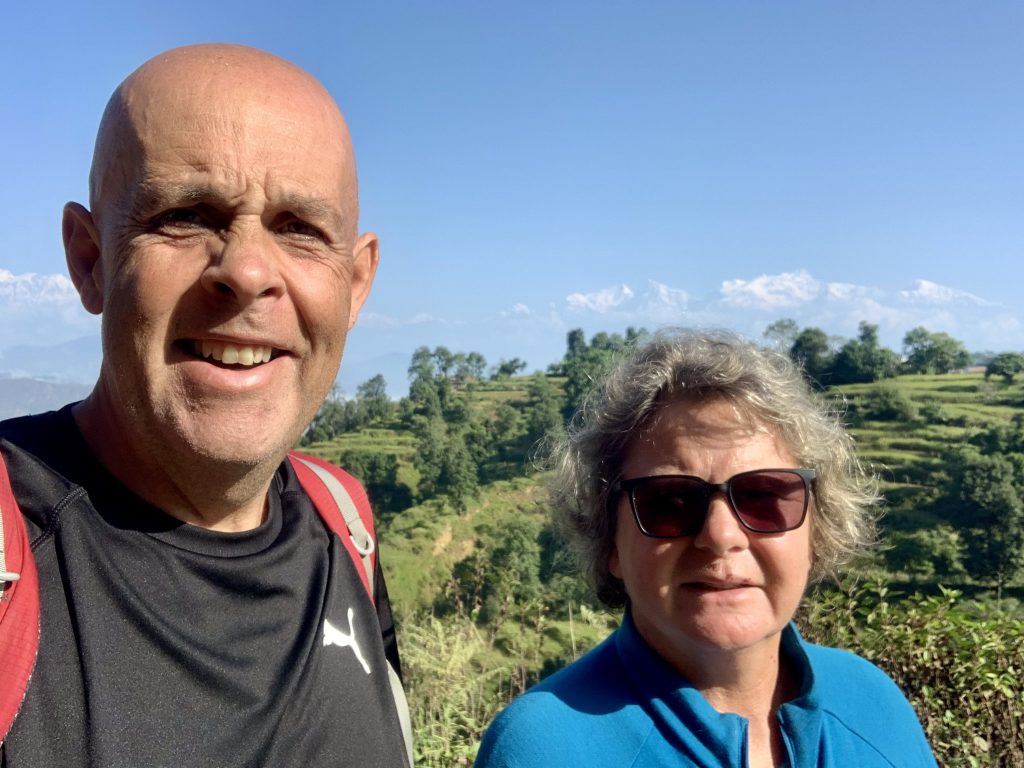
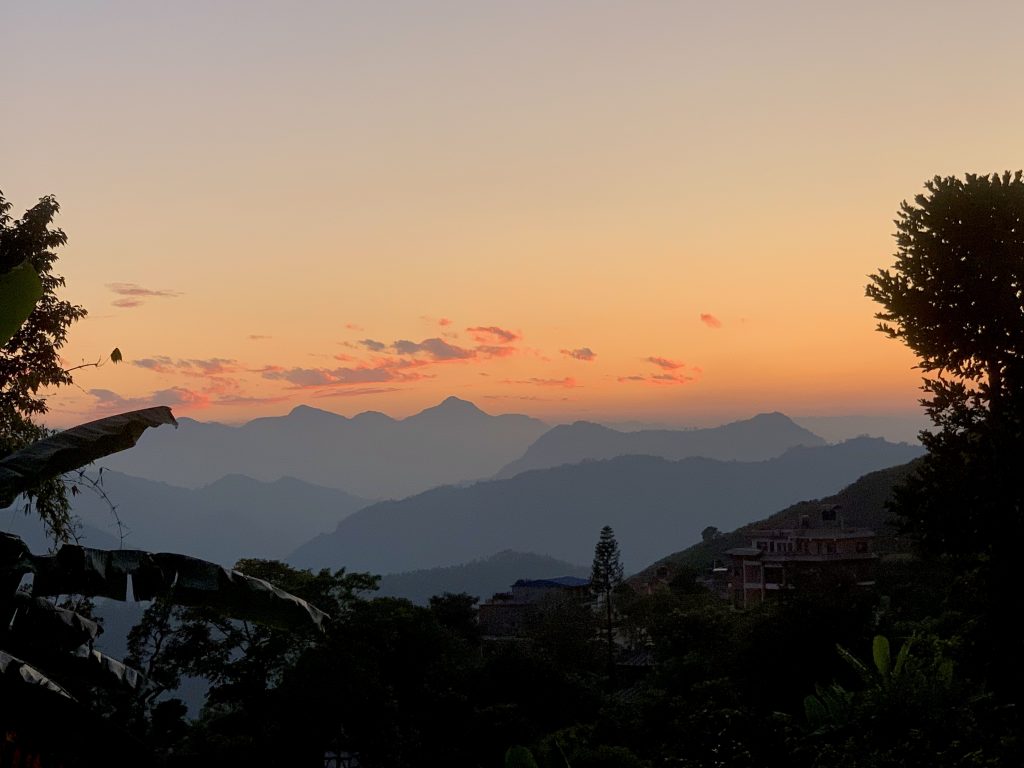
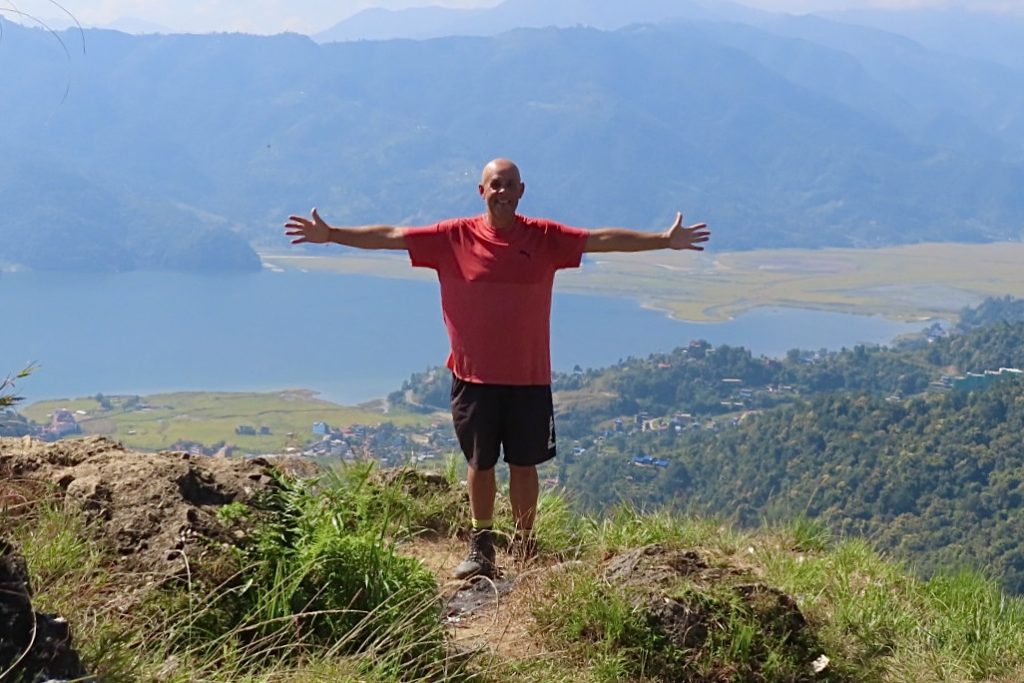
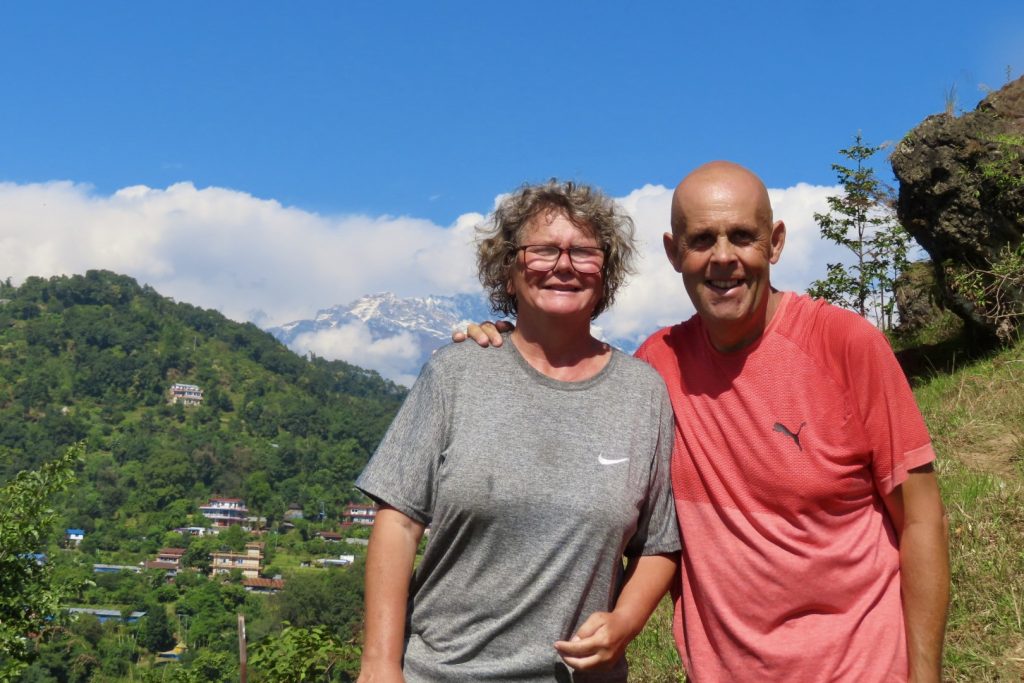
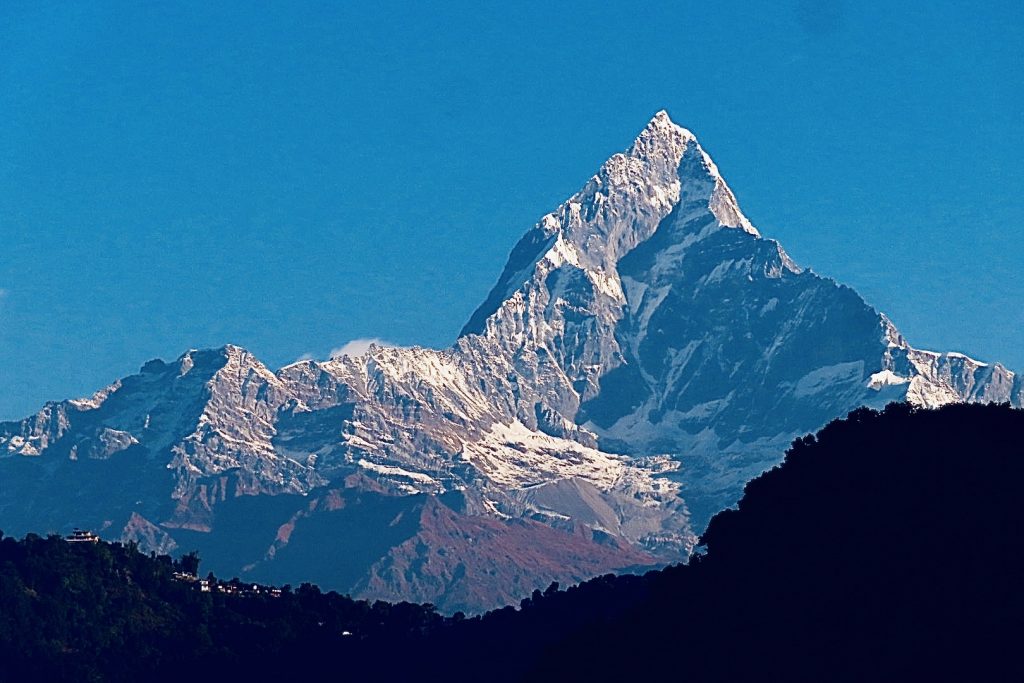
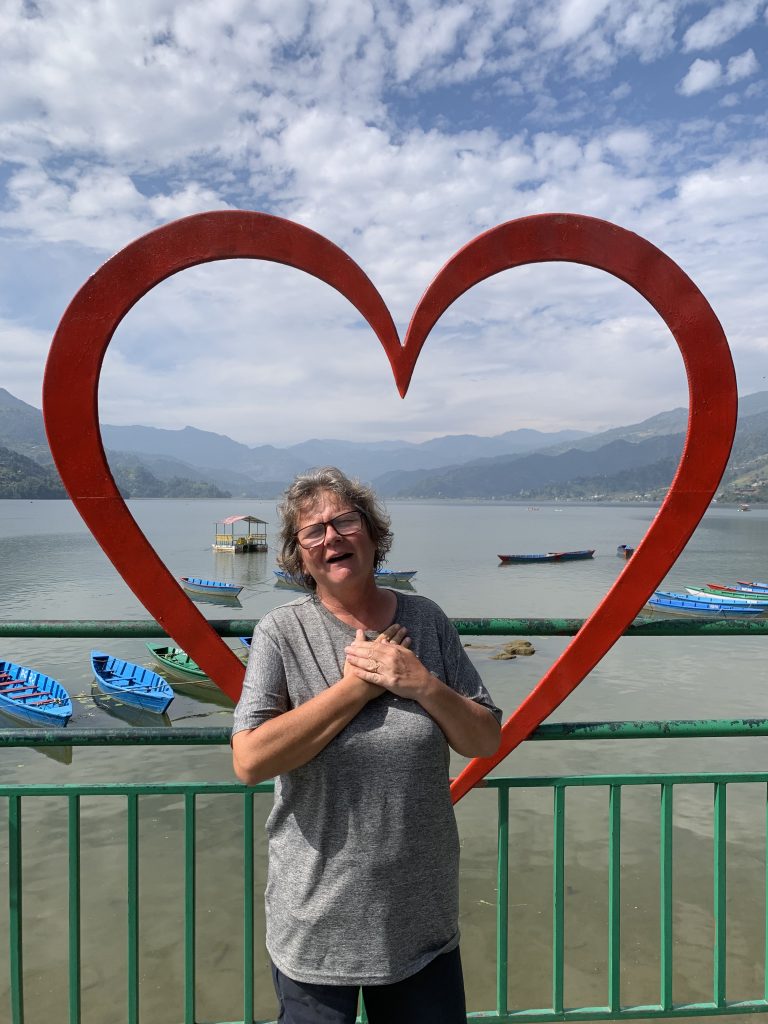
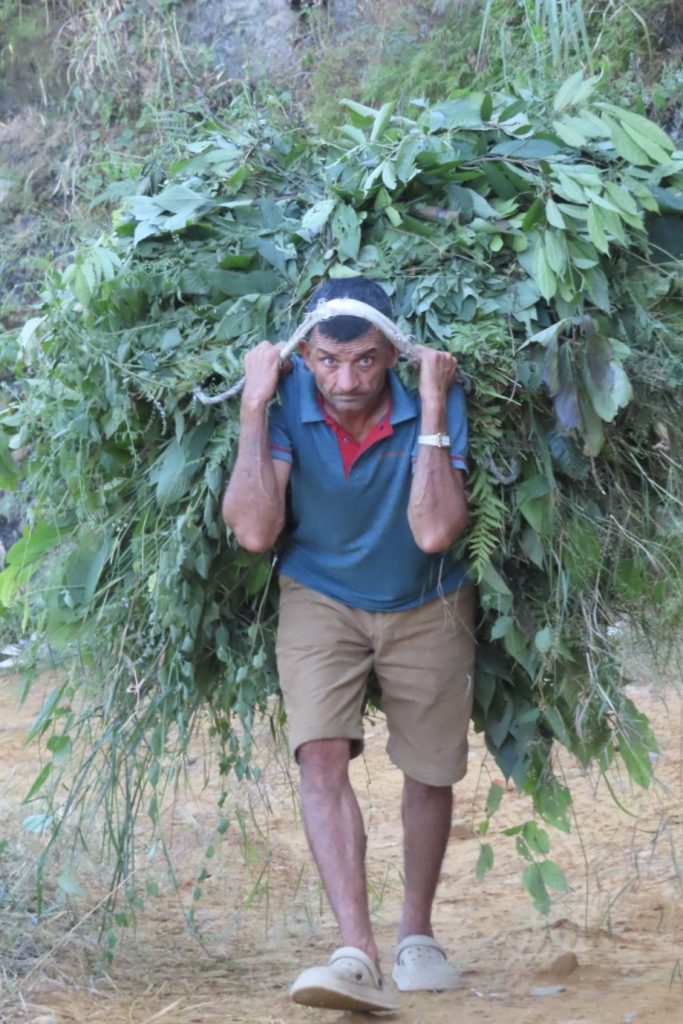
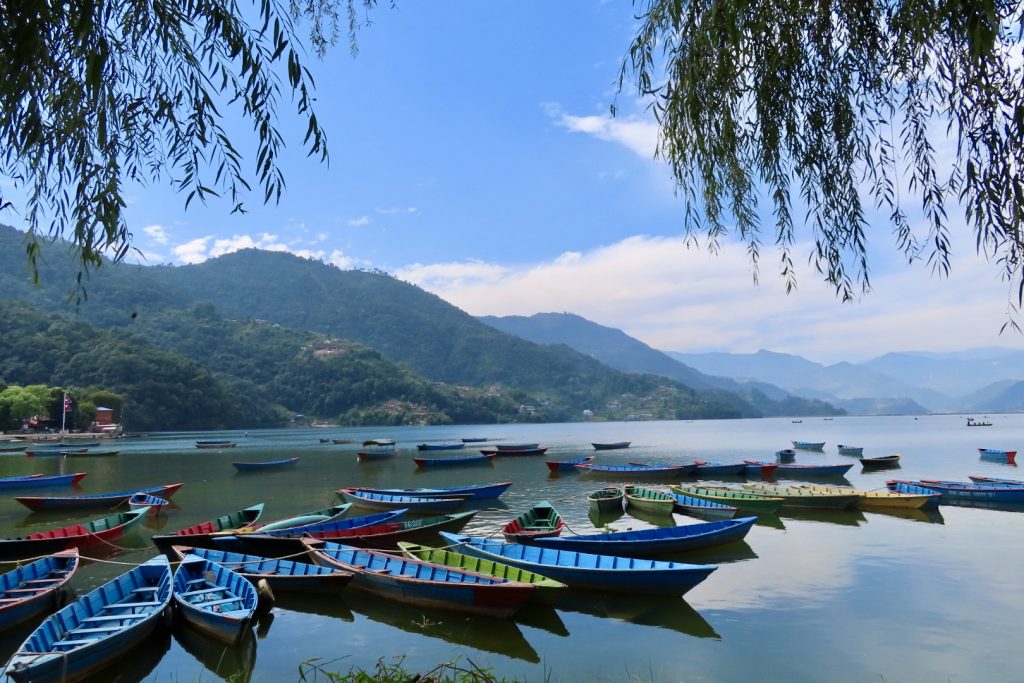
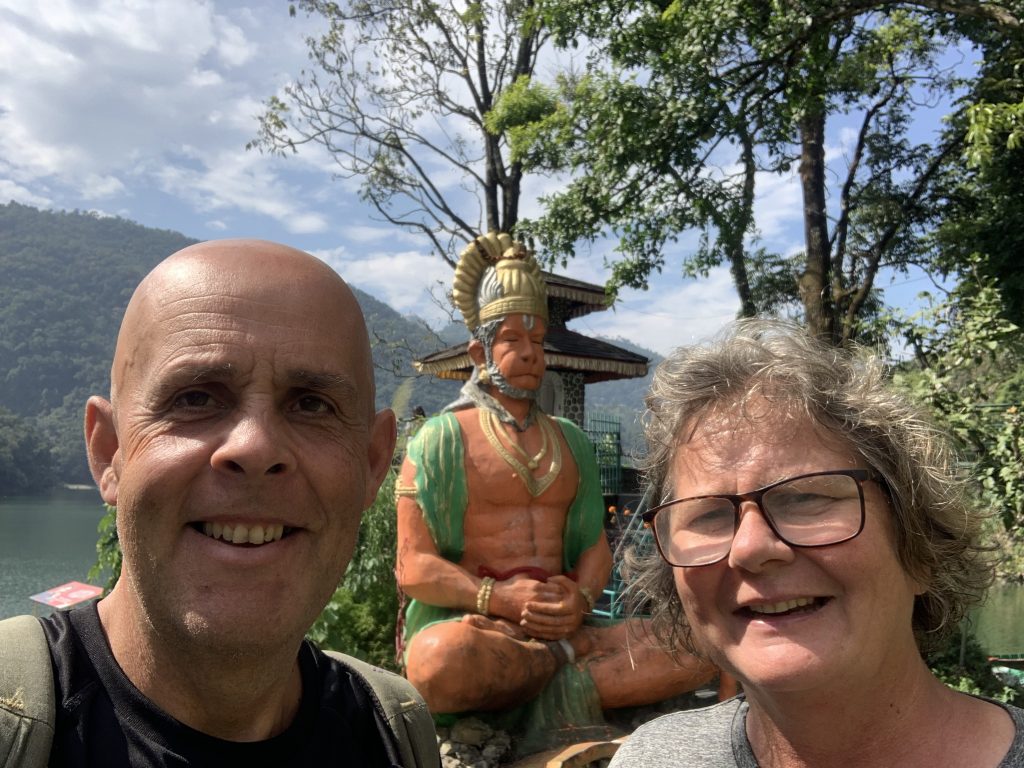
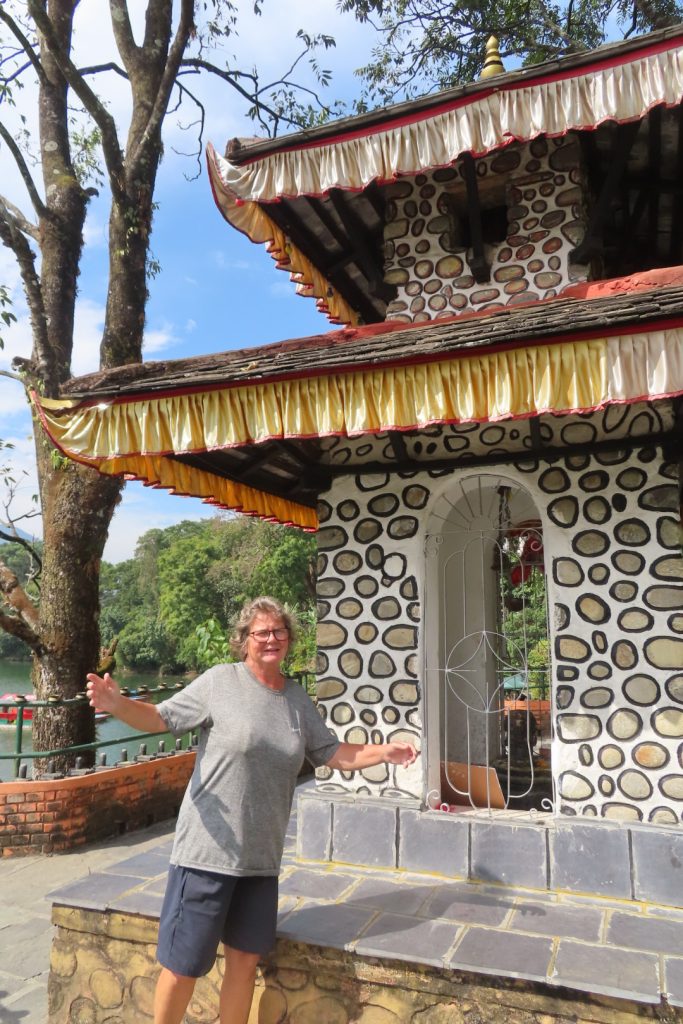

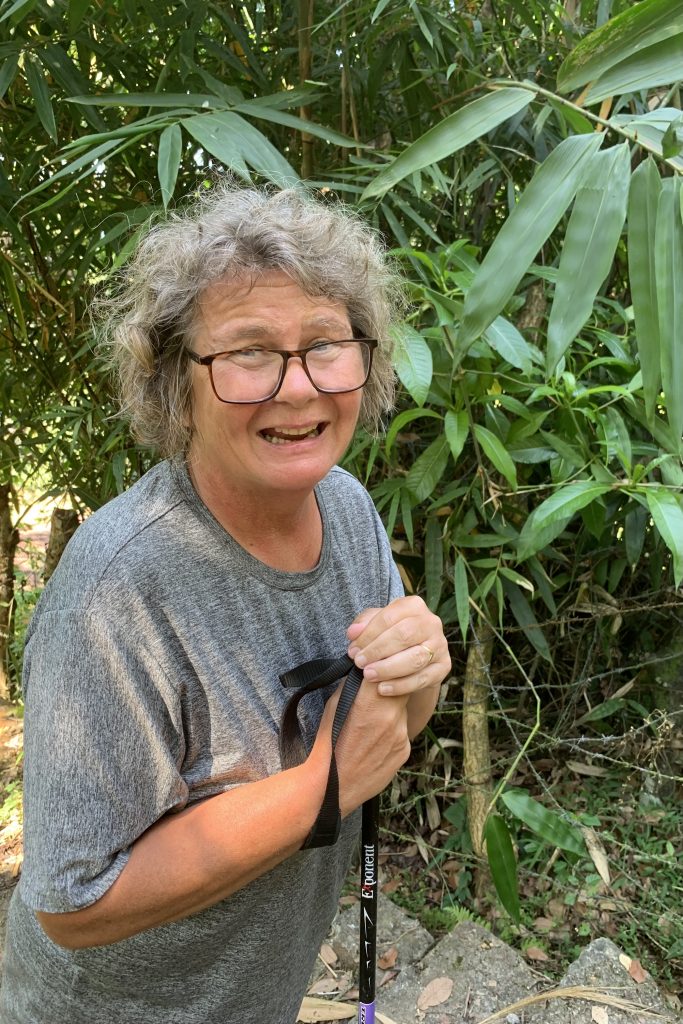
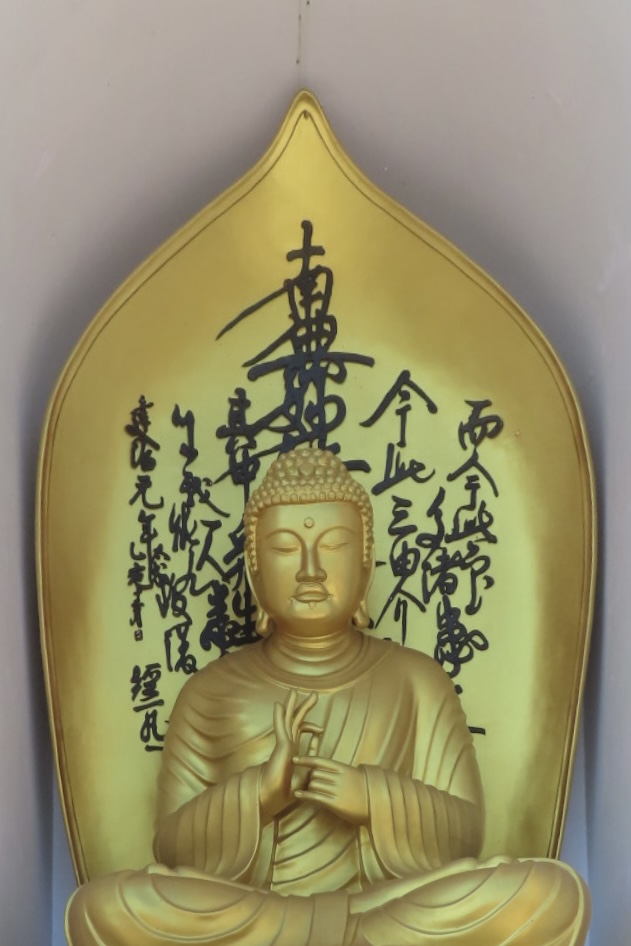
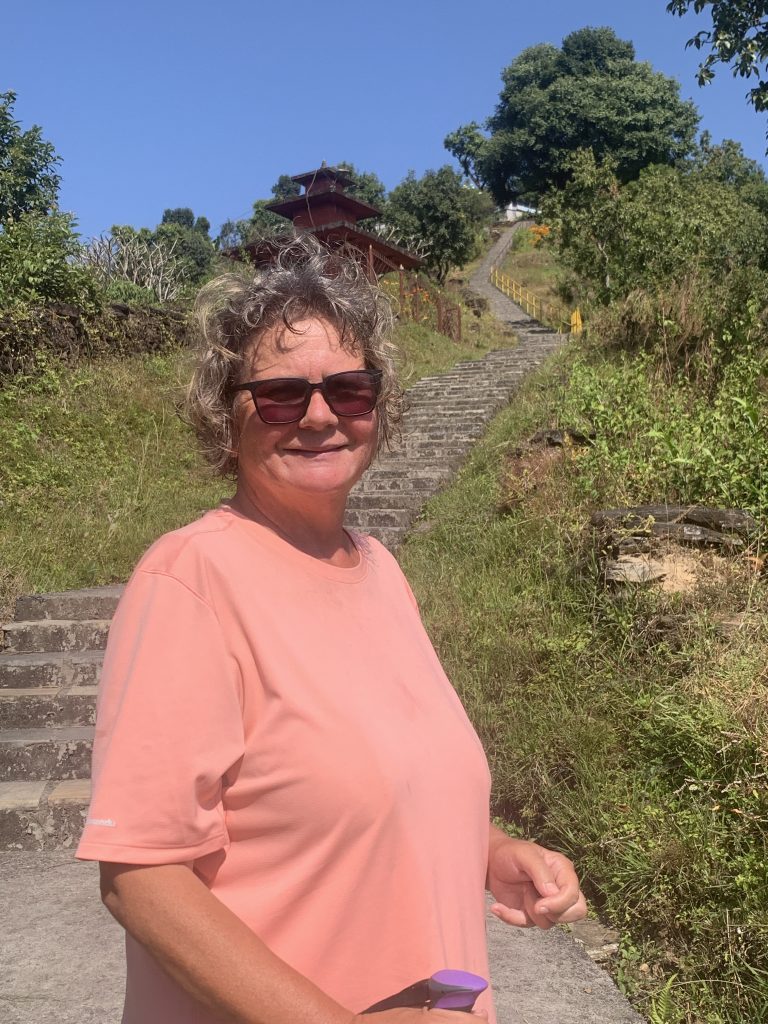
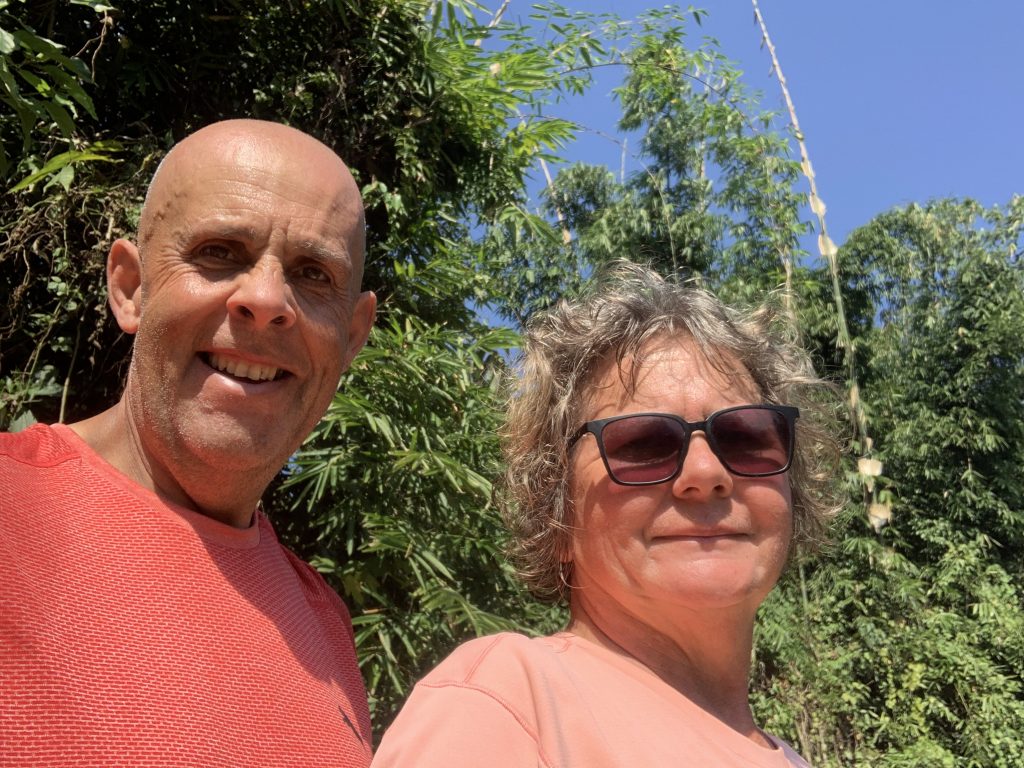
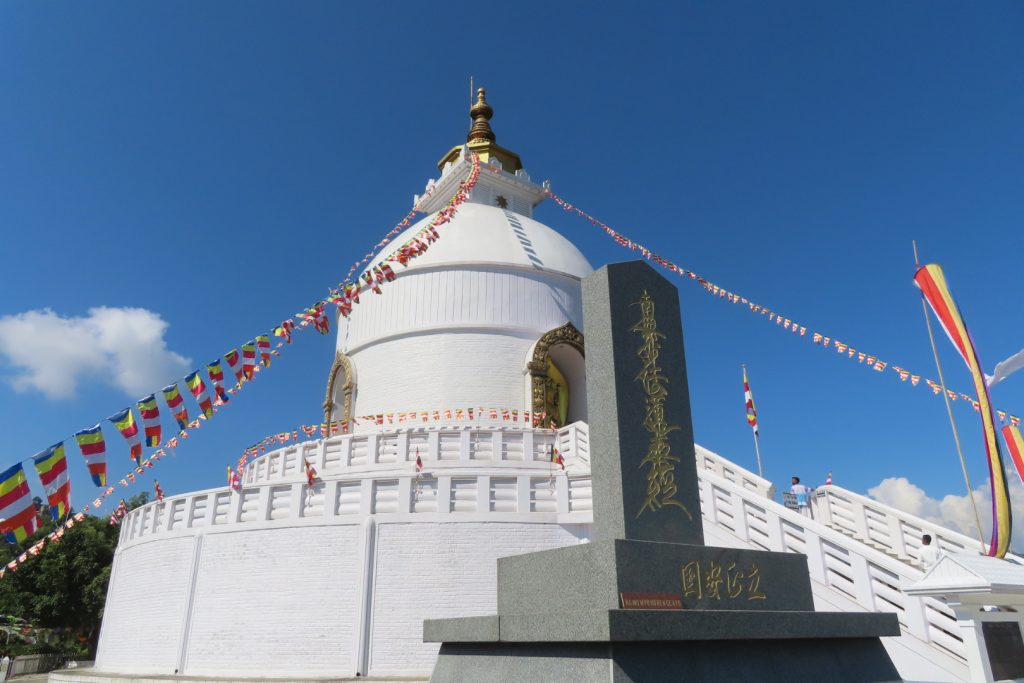
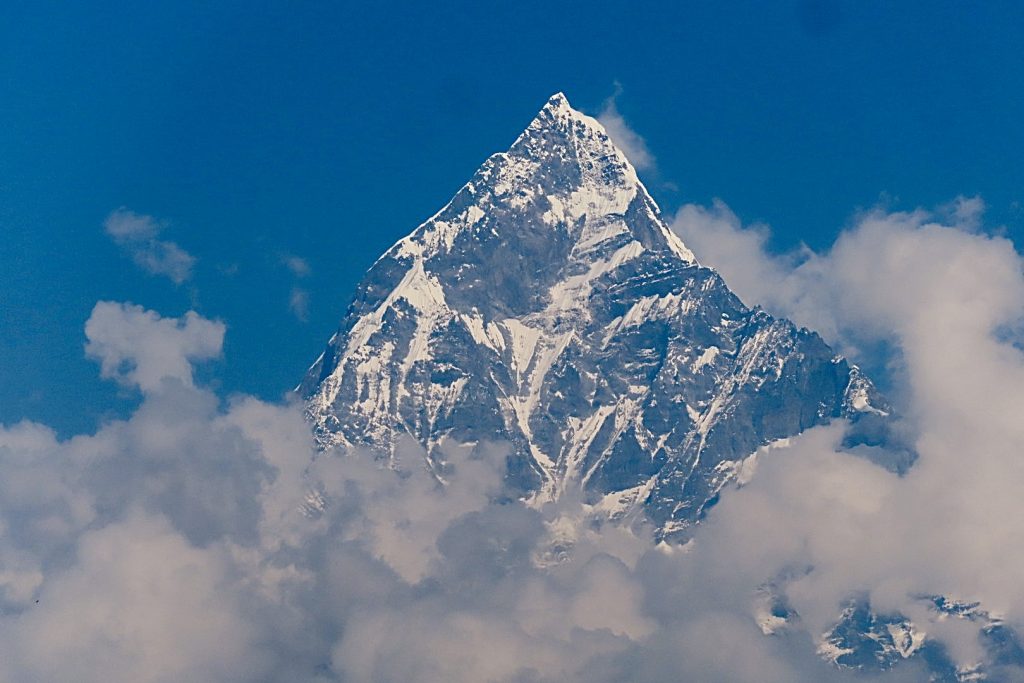
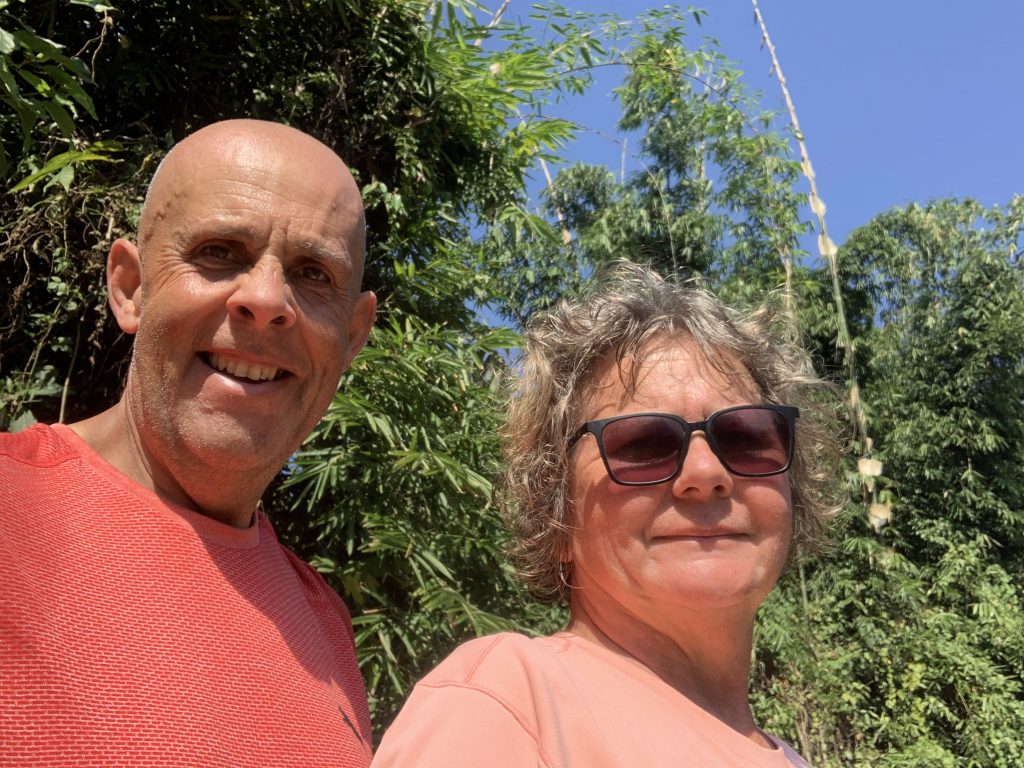
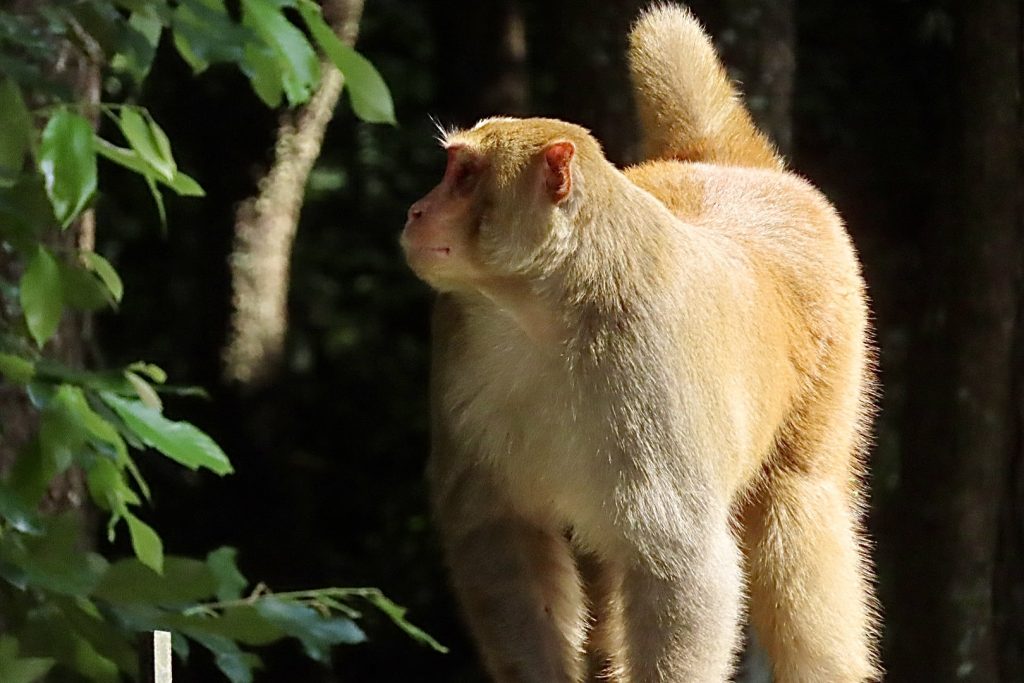

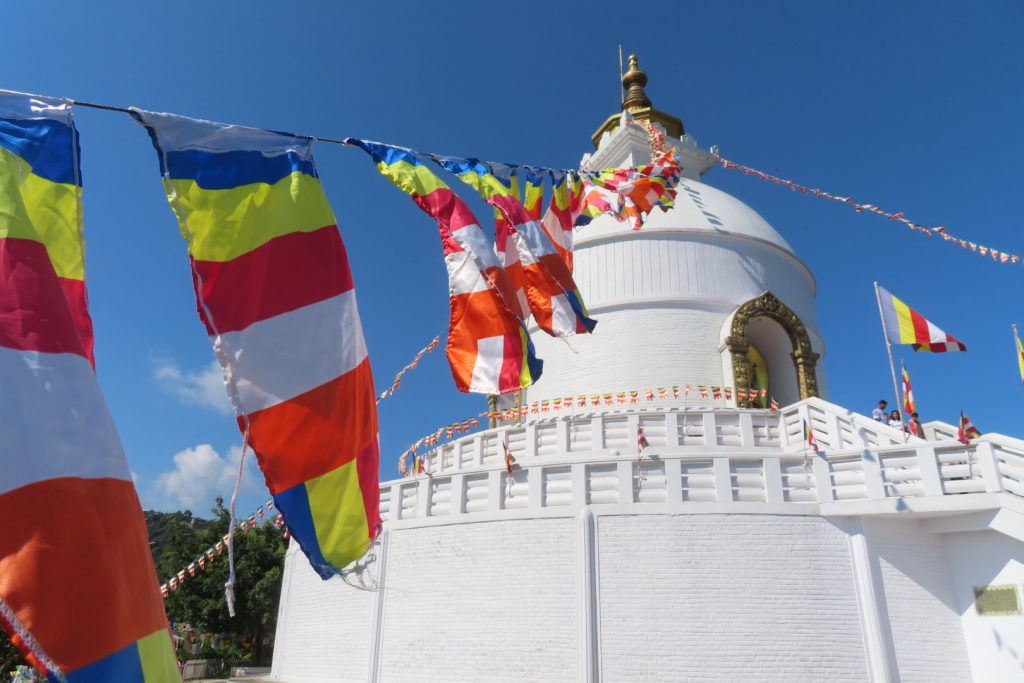
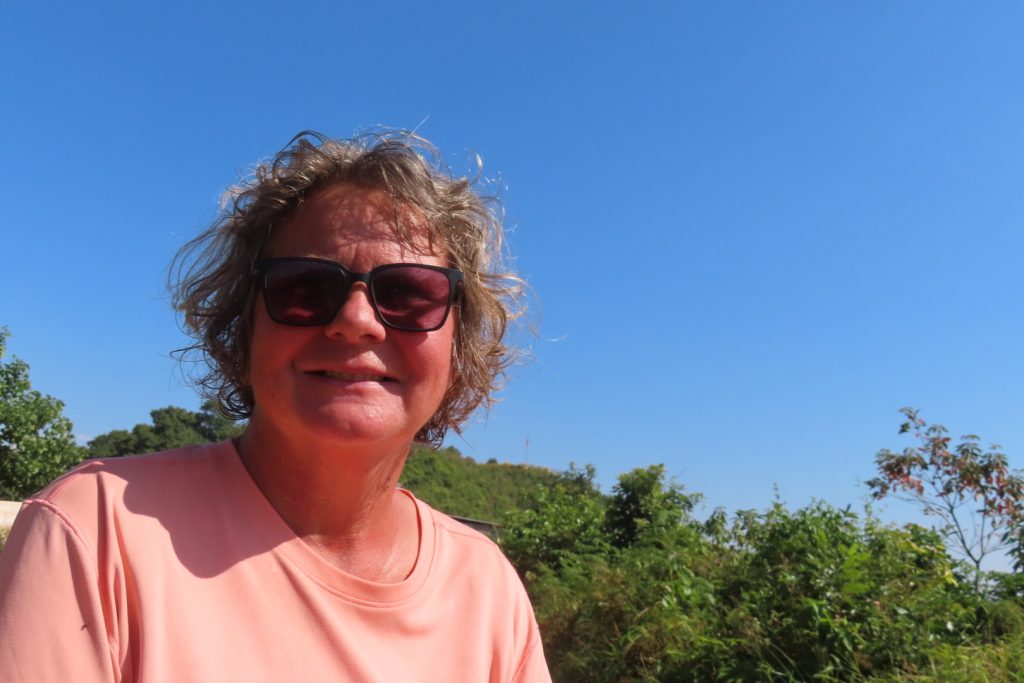
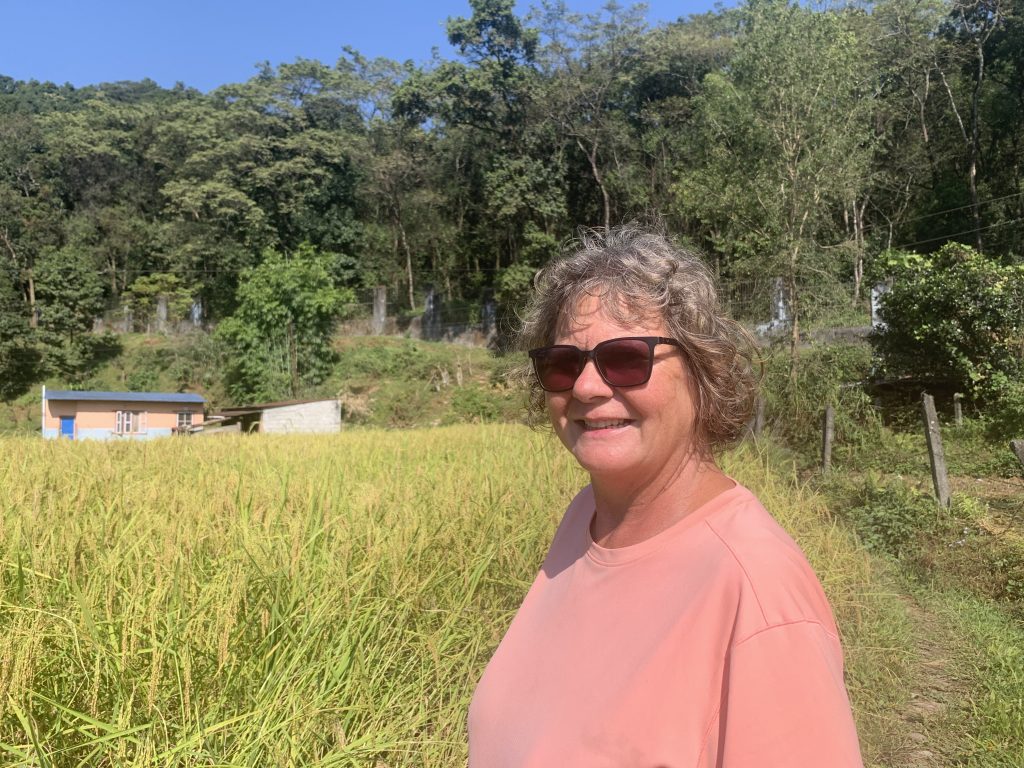
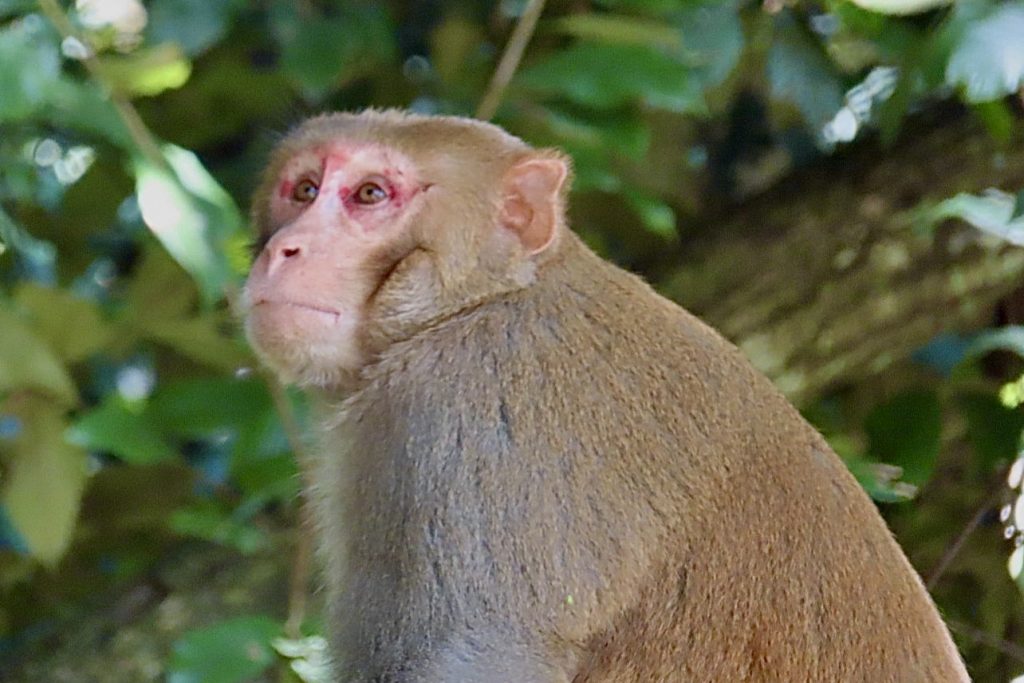
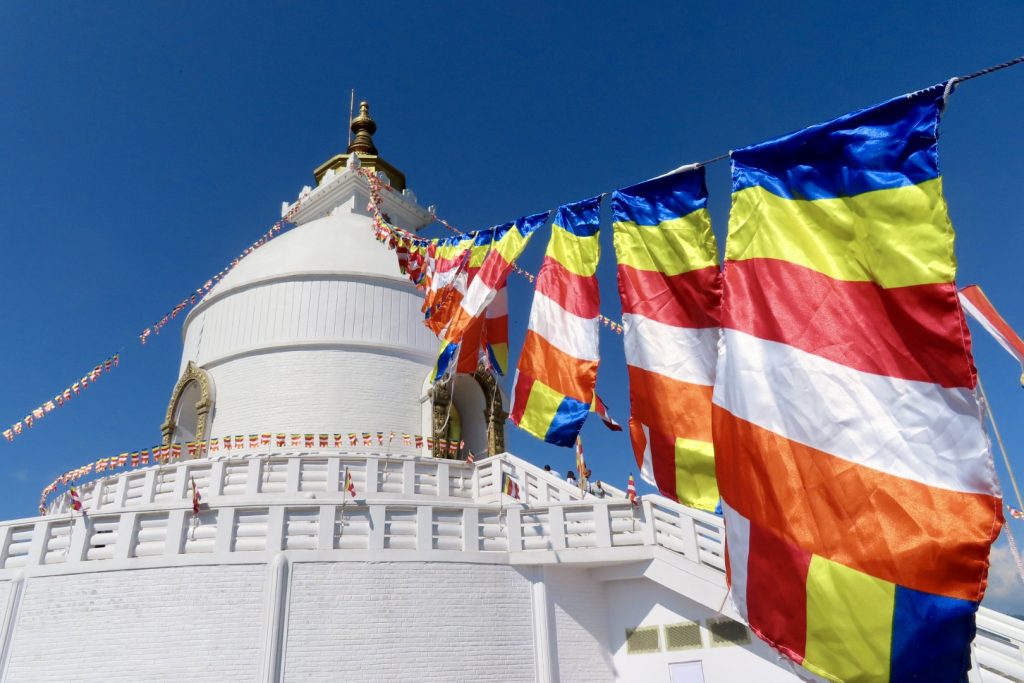
Hermosas fotos , sigan disfrutando 👏👍🥰💜
Hemos visto algunas vistas increíbles, esperemos que haya más por venir. 👍👍